




The Southern Coalition for Social Justice’s (SCSJ) Justice System Reform (JSR) program envisions a future in which young people of color attend schools that lift them up, not pat them down; live in communities that follow their lead, not suppress their voice; and are served by governments that invest in their future, not their incarceration. We believe in a world where no child is criminalized and communities of color have the resources, representation and power to thrive in their full dignity.
This report is a collaborative e ort intended to support grassroots organizations organizing against the criminalization of students of color, and advocating for greater investments in alternatives to criminalization.
We are immensely grateful for the work of all internal authors - Sabine Schoenbach, Tyler Whittenberg, Aimee Durant, Marcus Pollard, Hausson Byrd, and Imadé Borha and external contributing authors and editors including - Berhan Getachew, Hausson Byrd, Marlyn Pulido, Darnisha Pulley, Hadley Green, Vanessa Amankwaa, Camilla Dohlman, Eduardo Hernandez, and Harley Kranock - as well as partner reviewers: Tyler Whittenberg, Deputy Director of Opportunity to Learn, Advancement Project and former JSR Chief Counsel who laid the
foundation for our abolitionist approach and this report; Barbara Fedders, Assistant Professor, UNC School of Law; Heba Atwa, Policy Advocate, North Carolina Budget & Tax Center; B. Tessa Hale, Sta Attorney; Jennifer Story, Managing Attorney; and Katie Haberman, Social Worker at Right to Education Project, Legal Aid of North Carolina.
We respectfully acknowledge that the lands within and surrounding present day North Carolina are the traditional lands and gathering places of many Indigenous peoples, home today to the Eastern Band of Cherokee Indians, Cohaire Intra-Tribal Council, Haliwa-Saponi Indian Tribe, Lumbee Tribe, Meherrin Nation, Occaneechi Band of the Saponi Nation, Sappony, WaccamawSiouan Tribe and all self-identifying Indigenous people in our state. As we work and engage with local communities and seek justice for future generations, we o er gratitude for the use of this land.
We honor the enslaved people who built the wealth of this state, and recognize that the history of North Carolina is built on the devastating legacies of the transatlantic slave trade and colonialism. As Dr. Ruha Benjamin states, “we acknowledge the reparations owed to Black and Indigenous Communities and Nations, and the impossibilities of return for generations past.”1

Throughout America’s history, youth of color have been traumatized by racial violence and dehumanized by a society that often views their presence as a threat to public safety. These same young people are at constant risk of state-sanctioned violence from discriminatory law enforcement, which criminalizes age-appropriate behaviors and suppresses their freedom of movement.
The criminalization of youth exposes our youngest community members to a series of traumatic experiences negatively impacting their adolescent development, altering their life’s trajectory, and impacting future generations.
This report highlights the harms and alternatives to youth criminalization in North Carolina. Using historical records and perspectives, we define youth criminalization as a centuries-old legal system predicated on targeting people of color of all ages and excluding children of color from protective narratives and structures. Personal experiences and quantitative data tell a contemporary story of ongoing racial injustice, compounded by the lack of support systems for those with disabilities and those living in poverty.




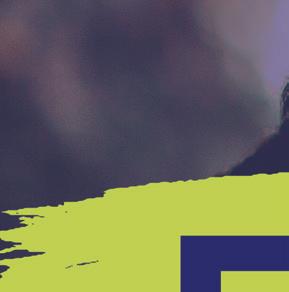

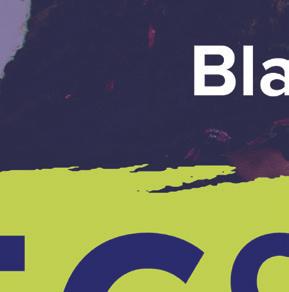
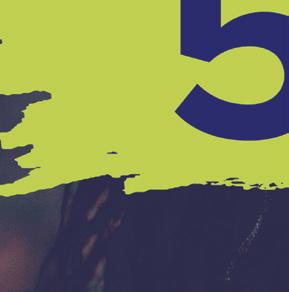


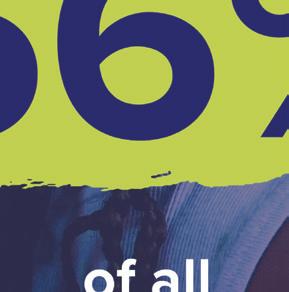
Disparities for Black, Latine, and Indigenous youth exist at almost every stage of the juvenile criminal legal process in North Carolina, and the disparities are most stark for Black youth. Research shows that these disparities are not due to higher rates of misbehavior, but are instead driven by intentional policy choices and structural factors. Rather than shield students from injustice, these policies and practices often mirror the same racist ideologies that have oppressed people of color for centuries.
• In 2020, Black youth represented less than one-quarter of the overall youth population in North Carolina (approximately 23%), but represented 56% of all juvenile complaints. White youth, in contrast, represented over half of the youth population in the state (approximately 52%), but only 28% of all juvenile complaints.2
• Black youth represented 67% of youth in North Carolina placed in short- and long- term confinement in 2020, while white youth represented only 18% of short-term (detention center) admissions and 23% of long-term (youth development center) commitments.3
The majority of youth enter the state’s juvenile criminal legal system for minor o enses and age-appropriate behaviors exhibited

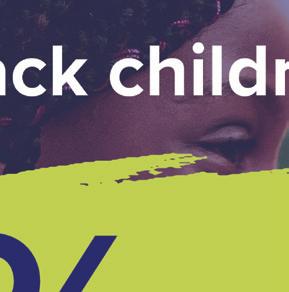
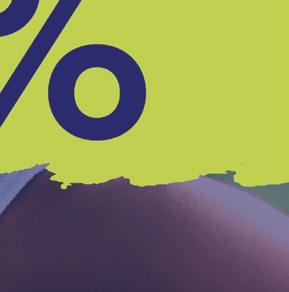



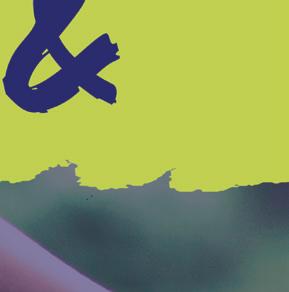


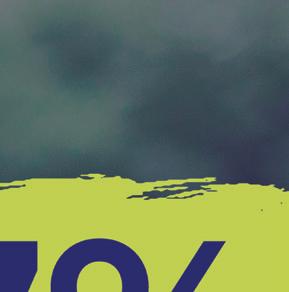
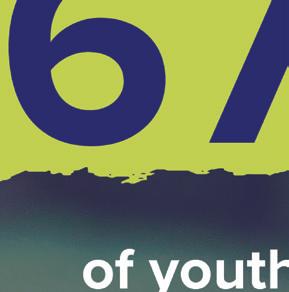




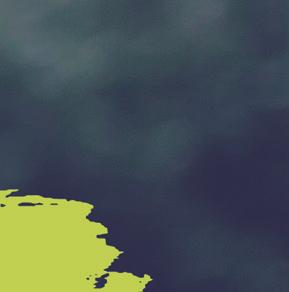







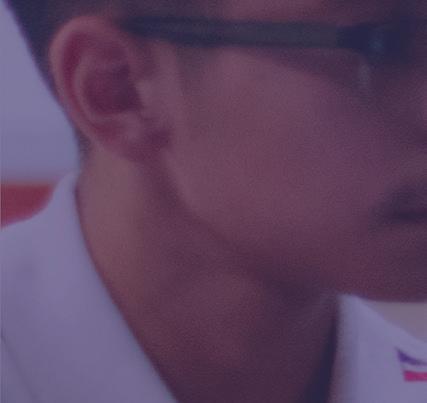
The cost of criminalizing youth in 2020 is

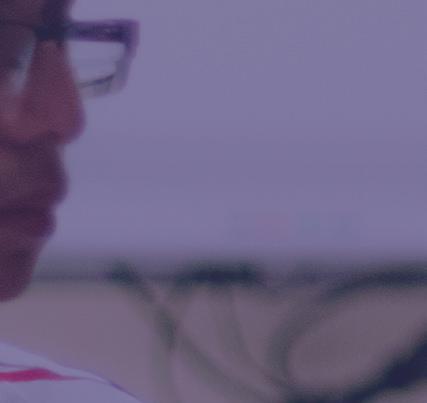

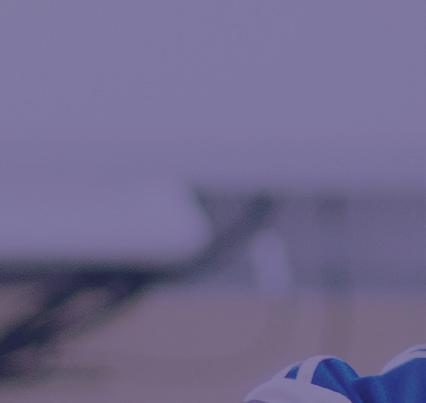

during school hours. In fact, school policing and school-based referrals to the North Carolina juvenile criminal legal system remain primary drivers of youth criminalization.4
• National data show that Black students are the most overdisciplined demographic compared to white students, and Black girls are overdisciplined at even higher rates than Black boys compared to white youth.5
• During the school year 2019-2020, Black students in North Carolina represented almost half of all school-based complaints (49%), despite representing only 25% of statewide student enrollment; white students represented 35% of all schoolbased complaints despite representing 46% of statewide student enrollment. 6
• At the district level, Black children were overrepresented in 82% of the districts (94 districts out of 115), with some districts exhibiting severe overrepresentation.7
Our report follows a “divest/invest” framework, which means we bring attention to the choices that resource a misguided, harmful, and racist system, and we call for a reinvestment in communityled alternatives that support and nourish youth of color and their communities.
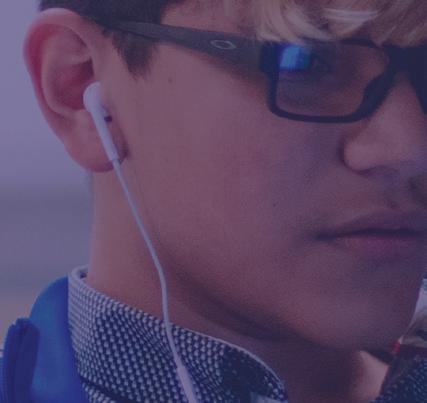
The cost of incarcerating one youth for one year is





• Over the last six years, total state appropriations to North Carolina’s juvenile criminal legal system have increased by approximately 37.5%.8
• In 2020, North Carolina spent over $170 million disciplining, policing, and incarcerating our state’s youth. Of this amount, our state spent almost $50 million on court services and close to $40 million to detain and incarcerate youth.9
• For the cost of incarcerating one youth for one year ($155,734), North Carolina could cover one year of in-state university tuition and fees for 23 students.10
The criminalization of youth costs North Carolina millions of dollars each year, paid for primarily by a regressive state tax system in which people with less income and wealth tend to pay the highest percentage in taxes. By realigning public spending with community priorities and investing in youth supports, preventative resources and communityled alternatives to youth criminalization, we can prioritize and support the healthy development of our community’s young people. Examples of existing communityled initiatives and a menu of commonsense public policies can lead us to an alternative that transforms justice at the
community level, supports youth wellness, and promotes positive youth development.
What is divest/invest? As Marbre StahlyButts of Law for Black Lives explains, divest/ invest is “the idea that as we’re making reforms, as we’re pushing policy changes, as we’re overseeing shifts in practice, that we pay special attention to how money is being spent, and we demand a divestment from the systems that harm our communities... and demand that money that’s currently being spent, that’s being poured into those systems with no accountability, be moved instead to community-based alternative systems that support our people, that feed our people, that ensure we have jobs, and housing – the things we need to take care of ourselves and our communities.” 11
The current state of investment in youth criminalization, combined with a lack of adequate investment in supportive resources, has profound impacts on the health and wellbeing of thousands of children across our state, in particular children of color. These traumatic e ects can often be long-term, impacting not only the youth who come in contact with these systems, but their families and communities across generations.
policy makers, especially as it relates to their interest in supporting youth of color. Our children are paying a heavy price for these choices, as are our communities.
Our report addresses the harms of a statesupported youth criminalization system. We also speak to a vision of the future — modeled by already-existing community-led initiatives — in which we prioritize and support the healthy development of our community’s youngest members with strength-based approaches centering dignity and respect.
A note on terminology: Throughout this report, we refer to North Carolina’s juvenile criminal legal system as a division of the North Carolina Department of Public Safety. When referring to the larger system(s), however, we follow the lead of prison abolitionist Mariame Kaba and use the term criminal punishment system to acknowledge the system’s focus on retribution as opposed to the ends it purports to pursue.
We are using the gender-neutral usage of Latine, recognizing that Latinx is often used in the U.S. for this purpose, and taking our lead from activists in Spanish-speaking countries. We are using the terms Black, Indigenous, Latine, and white for the populations the data categories describe, in an attempt to be as specific as possible, to reveal data limitations, and to avoid rendering groups invisible. We understand that not everyone will see themselves in these terms, and honor and respect the language individuals and communities use to describe their own identities. of ourselves and our communities.11
North Carolina policy makers choose to pour tens of millions of dollars into a traumatic and unjust system. Budgets are moral statements. Our current investments speak volumes about the priorities of elected o cials and
Adolescence is a transitional period during which we move out of our childhood dependence on parents and guardians and into a state of independence before adulthood. As our brains develop between the ages of 10 to 25, we grapple with identity, learn to manage our emotions and relationships, and develop our sense of equity and fairness. We experiment with the world around us, developing coping mechanisms and practices of resiliency that remain with us as we transition into adulthood.12
Research demonstrates that interventions created to support families and establish a safe and supportive social environment benefit adolescent development.13 These interventions help create three conditions critical for a healthy adolescence: (1) positive relationships with adults genuinely concerned about the adolescent’s wellbeing; (2) inclusion within peer groups that model prosocial behavior; and (3) involvement in activities that promote critical thinking and autonomous decision-making.14
Conversely, traditional practices within the youth criminal punishment system (e.g., arrest, secure detention, commitment to youth detention and other court ordered out-of-home placements, and probation) are counter-productive to positive adolescent development. Carceral practices remove youth from any positive familial relationships, separate them from prosocial peer groups, and disrupt their educational experience all while aggregating youth who
may be su ering from similar academic, behavioral, and psychological challenges.
Advocates and organizers throughout North Carolina successfully campaigned to raise the age at which a youth is tried as an adult in criminal court from 16-years of age to 18-years of age. Prior to the passage of the Juvenile Justice Reinvestment Act (JJRA), North Carolina was the only state to automatically prosecute 16-year olds and 17-year olds as adults. ‘Raise the Age’ went into e ect on December 1, 2019.15
Until the 2021 legislative session, the North Carolina juvenile criminal legal system also had the dubious distinction of criminalizing earlier into childhood than any other state - declaring 6-year olds eligible to be defendants.16 Governor Cooper signed SB 207 into law in August 2021, which raises the age of juvenile jurisdiction from 6-years old to 10-years old, with some exceptions such as Class A-G felonies.17
After entering the criminal punishment system, youth face immediate and collateral consequences harming their future, their families, and their communities, including: loss of instructional time and course credits; legal costs and court fees; separation from family; emotional and physical trauma; challenges to their immigration status; loss of housing assistance; and loss of employment.18 exceptions such as Class A-G felonies.17
Our society relies heavily on the juvenile criminal punishment system for handling youth with serious mental health needs and research shows that youth incarceration can cause or exacerbate mental health issues.
• A point-in-time survey in December 2020 showed that 96% of youth committed to North Carolina’s youth development centers (YDC) carried at least one mental health diagnosis; 78% presented with more than one diagnosis. On average, the young people committed to YDC’s carried three separate mental health and/ or substance use disorder diagnoses.19
• The isolation associated with youth incarceration can lead to a lack of social interaction and exercise, causing increased anxiety, depression, anger, and lower levels of brain function.20
• One study found that for one-third of incarcerated youth diagnosed with depression, the onset of their depression took place after they began their incarceration.21
• Youth incarceration has also been linked to mental illness and suicide in adulthood.22
North Carolina operates two types of youth secure custody facilities: detention facilities and youth development centers (YDCs). DPS calls North Carolina’s 12 juvenile detention centers “secure, temporary facilities” where youth await a court date or until a more permanent detainment placement is arranged.23 YDCs are the “most restrictive, intensive dispositional option available to North Carolina’s juvenile courts.”24 There
are currently four YDCs across the state — a fifth is in construction. Commitment is typically for a period of at least six months; in 2020, the average stay was 14.2 months. A child as young as 10 can be committed to youth development centers; in 2020, the youngest age of a child committed was 13.25
Youth detention and incarceration negatively impacts physical health well into adulthood.
• In youth detention centers, there is an increased risk for communicable diseases, such as HIV and HPV, as well as physical and sexual trauma. 26
• Post-release conditions, such as disrupted social networks, unemployment, and social stigma, also contribute to negative health outcomes.27
Youth Incarceration causes gaps and lapses in education.
• The majority of youth nationwide (66%) do not return to school after being released from secure facilities.28
• Of youth released from YDCs in North Carolina in 2019, about 37% were repeating their grade level, and more than 30% of students were more than a year behind their cohort. 29
• Students returning from incarceration also face issues re-enrolling in their home school district, transferring credits earned while incarcerated, being needlessly forced into alternative educational settings, and experiencing stigmatization while attending school.
Youth criminalization and incarceration negatively impacts the entire family.
• The criminal punishment system separates youth from their family, breaking family and sibling ties which has negative e ects on child and adolescent development.30
• Families experience financial hardship trying to support a child accused of a crime, and low-income families, especially, may not be able to a ord the court costs and potential attorneys fees involved.31
• Siblings have an especially di cult time adjusting to the loss of their incarcerated or detained siblings and experience significant emotional stress and social stigma. In fact, after an older sibling is incarcerated, younger siblings are more likely to become incarcerated themselves.32
• Noncitizen youth and their families in contact with the criminal punishment system are also at greater risk of detention and deportation by federal immigration authorities.33
• Court involvement can also a ect Section 8 housing vouchers. The housing authority has broad discretion to evict (or deny the application of) an entire household based on the action of any one tenant, or any guest of any one tenant.
Poverty and the North Carolina juvenile criminal legal system: “Poverty is the foundational principle of what’s going on” in North Carolina’s juvenile courts, an attorney told researchers looking at the intersections between poverty and North Carolina’s juvenile


criminal legal system. Court-ordered fines and fees, on top of indirect costs like constraints on time, transportation, and support services that can lead to failure to comply with court orders, work together to exacerbate existing economic inequities. The penalties faced by parents and ultimately children are severe and can often lead to deeper and prolonged entanglement in the system.34
The delays or gaps in education experienced by incarcerated youth also hinder their ability to find a job and obtain economic stability after release.
• Research shows that young people who have been incarcerated have less education, job experience, skills, and social capital – all of which make it harder to find a job.35
• Loss of income also impacts their family and community, establishing a pattern that helps uphold the status quo of socioeconomic inequity and mass incarceration.
Youth incarceration also increases chances for recidivism, meaning young people who have been incarcerated are more likely to come in contact with the carceral system again than someone who has never been incarcerated.
• Studies have found that prior incarceration – by itself – was a greater predictor of recidivism than gang membership, carrying a weapon, or having a poor parental relationship.36
The harms of North Carolina’s juvenile criminal legal system fall disproportionately on our state’s children of color. At each critical stage of the process — in school-based referrals, the filing of criminal complaints, secure detentions, and youth development center incarcerations — Black youth, in particular, are disportionately targeted and impacted.
Research shows that these disparities are not due to higher rates of misbehavior, but are instead driven by bias as well as systemic and structural factors. Black youth are often perceived as more dangerous, involved in drug use, and less responsive to rehabilitation than their white peers.37 Black girls are often viewed as less innocent, more adult-like and in need of less support than their white peers, especially in the age range of 5-14.38 Anti-Black stereotypes can lead to more severe reactions to youth misbehavior.39
Insensitivity and racial stereotyping on the part of police, prosecutors, judges, and court workers contribute to racial and ethnic disparities in the youth criminal punishment system.40 Court o cials, for example, often have the discretion to detain young people accused of crimes if o cials believe these youth will miss upcoming hearings or are at risk for committing
additional crimes. Their discretion can lead to the disproportionate detainment of Black and Latine youth.41 Additionally, racial stereotypes about home conditions often lead to negative intake results, even when youth come from what would commonly be considered stable home environments.42
Black students are also disproportionately represented in school-based referrals (see below). Again, research has consistently shown that these disparities are not due to higher rates of misbehavior. 43 The schoolto-prison pipeline is a major component of institutional racism in the United States insofar as it helps to maintain racial inequality and disproportionality without the majority of Americans being aware of this function.44 This is observable in education discipline policies which have created a narrative in schools that label disruptive youth as dangerous and in need of punishment or removal for their transgressions, in order to promote the safety and well-being of other students (often white students) in the school.45
School-to-prison pipeline: The collective tools, approaches, and policies of the modern criminal punishment system that exist in schools and funnel children from public schools onto a track toward criminalization.
Racist school disciplinary policies and discretionary rules are particularly harmful

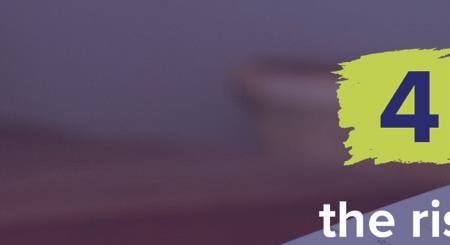
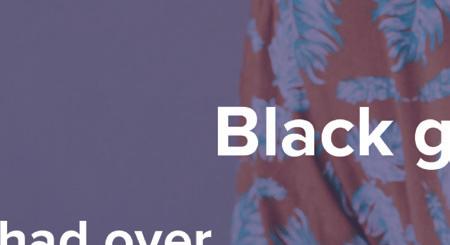
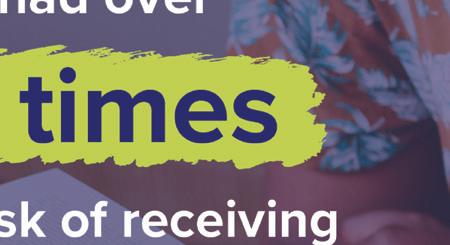
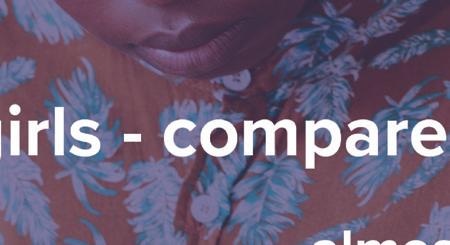

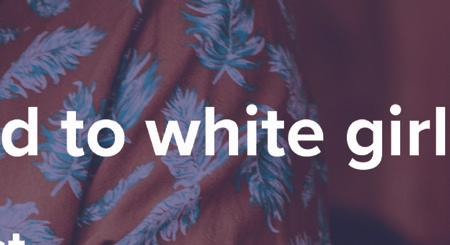
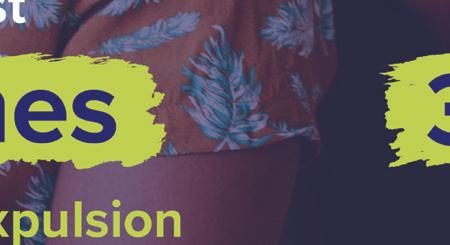
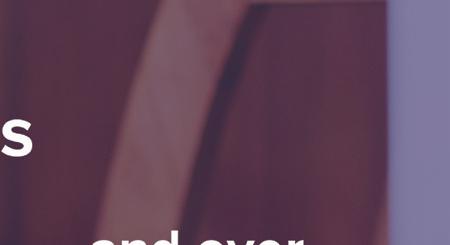
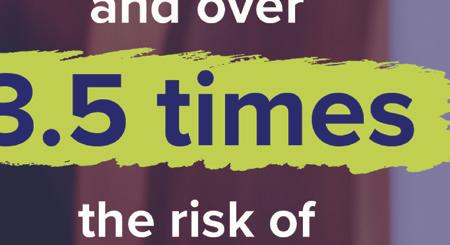









for Black girls. National data show that Black students are the most overdisciplined demographic compared to white students, and Black girls are overdisciplined at even higher rates than Black boys compared to white youth. In 2017-2018, Black girlscompared to white girls - had over four times the risk of receiving out-of school suspension, almost four times the risk of expulsion, and over three and half times the risk of arrest at school.46
In addition to the adultification of Black girls, suspensions of Black girls are often driven by teachers’ unconscious racial bias, and frequently occur when students justifiably break racist rules. Policies that prohibit specific hairstyles and clothing, for example, empower educators to apply stereotypes interpreting certain behaviors as defiant. Insu cient mental health resources also play a role in the overcriminalization of Black girls.47
School policing forms an integral part of the school-to-prison pipeline and the social control of students of color. The presence of school resource o cers (SROs) in schools is associated with increased referrals to law enforcement for minor, nonviolent infractions.48 Police o cers often perceive Black boys as older, viewing them as less childlike and less innocent than white boys of the same age suspected of committing the same o enses.49 One study found that students who displayed a “[B]lack walking style” were perceived by their teachers as lower in academic achievement, highly aggressive, and more likely to need special education services.50
Our country has devalued and overcriminalized Black children for centuries. Two themes run through the historical literature on the rise of the youth criminal punishment system: a Eurocentric understanding of the appropriate behavior of children, and an exclusion of children of color from both the narratives and structures that protect children.51
During the period of chattel slavery, societal views of children excluded Black children, who were instead seen as valuable commodities to be bought, sold, and punished without protections. Language written in the Thirteenth Amendment allowed for the re-enslavement of Black people through the prison system, which continued to legitimize slave-like conditions.52 This provision, combined with the convict leasing system, where Southern states leased incarcerated people to private entities, legalized control over Black people.53
In direct response to the 13th Amendment, Southern states passed laws known as “Black Codes” that criminalized certain behaviors common to recently freed Black people like “walking at night” or “walking without a purpose.”54 Black Codes also enabled courts to force Black children into “apprenticeships” with former slaveholders until adulthood.55 The Black Codes dramatically increased prison populations and, by the 1870s, 95% of people in Southern prisons were Black. 56 As of 1890, 18% of all Black prisoners were children.57
As a result of the actions of reformists Julia Lathrop and Lucy Flower, who drafted
“An Act for the Treatment and Control of Dependent, Neglected and Delinquent Children,” the nation’s first youth court was established in 1899 in Chicago.58 By 1912, youth courts had been established in 22 states, with Black youth overrepresented in legal caseloads while underserved by community services and agencies.59
George Stinney, Jr. was 14 years old when he was executed by the state in 1944. The straps of the electric chair were too big for his small body and he sat on a stack of books to be electrocuted. Accused of killing two white girls, George was arrested and interrogated alone, without his parents and without an attorney. A sheri ’s claim to an unsubstantiated confession was the only evidence presented at his trial. An allwhite jury convicted him within 10 minutes, and it took a full 70 years after his death for him to finally be exonerated.60 Facts in the case prompted a new hearing in which his surviving siblings testified and the state argued that the conviction should stand.61 In 2014, Circuit Court Judge Carmen Mullen vacated the conviction, writing “I can think of no greater injustice.”62
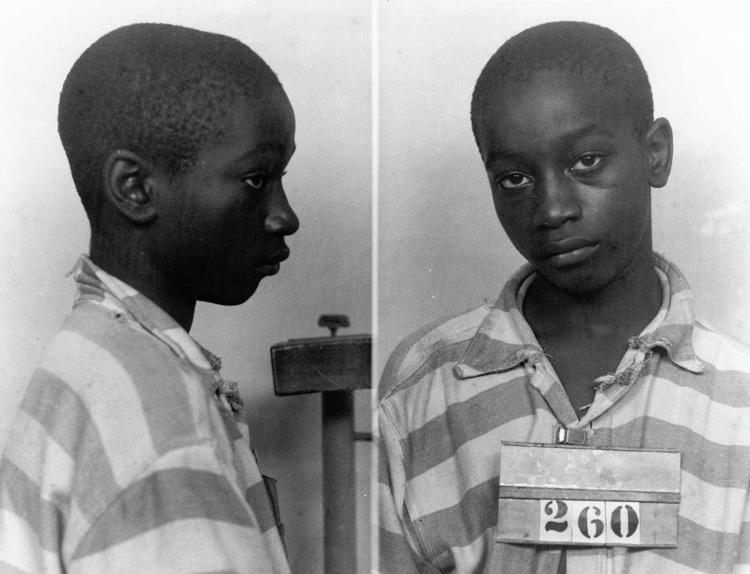
A closer look at North Carolina’s criminal legal system data shows alarming racial disparities at each stage of the process. A recent study found that Black, Latine and Indigenous youth are disproportionately represented at each processing point of the juvenile criminal legal system in North Carolina and that these disparities are most stark at the beginning of the process (complaints) and within the deepest well (youth confinement). The study also confirmed that the disparities are most severe for Black youth, though less extreme disparities also exist for Latine and Indigenous youth.63
Regionally, Wake and Mecklenburg counties exhibited higher disproportionality for Black youth than the state as a whole regarding complaints received and secure detention. In 2018, Mecklenburg, Guilford, Cumberland, Pitt, and Forsyth (in order from greatest to least) counties accounted for 47.8% of all state YDC commitments, and 90.7% of the youths incarcerated from these counties were Black. Mecklenburg County accounted for about 20% of statewide commitments by itself, and 40 of the 41 youth committed to YDCs from this county were Black. Robeson County, home to Lumbee Tribe, has the largest number of Indigenous youth in the state, and RRIs (the ratio of Indigenous youth compared to white youth at a specific stage in the process) for use of secure detention was much higher for Indigenous youth in this county than in the rest of the state.64
Although school-based referral rates dropped in 2020 due to COVID-19 keeping

students out of the classroom,65 Black students represented almost half (49%) of all school-based complaints in North Carolina during the school year 20192020—despite representing only 25% of statewide student enrollment. In contrast, white students represented 35% of all school-based complaints despite representing 46% of statewide student enrollment (see figure 1).66 Similarly, during the prior school year, Black students
Fig 1: Although school-based complaints dropped due to school closings in 2019-2020, Black students remained overrepresented in these complaints
Percentage of Students in District by Race North Carolina, School Year 2019-2020
Percentage of School-Based Complaints by Race North Carolina, School Year 2019-2020
represented 48% of school-based complaints, while representing 25% of enrollment.67
A closer look at the district level shows over-representation of Black children in 81.74% of the districts (94 districts out of 115), with quite a few districts exhibiting severe overrepresentation. (see Figure 2).
How to read this data: The following maps represent percentage increases and decreases by finding the di erence between percentages then dividing it by the amount of students in the school district. For example, when Latine students make up 20% of students in the school district, but 40% of school-based complaints, the di erence is 100% because it is double of the initial total. If there were no di erence, where Latine students make up 20% in the school district and 20% of schoolbased complaints, the di erence is 0%.
Some of the most extreme examples of overrepresentation of Black children in the school-based complaint process take place in districts with very low enrollment numbers of Black children. For instance, in Alleghany school district, 12.5% of the complaints were filed against Black children, despite the fact that Black children represent only 0.4% of student enrollment -- a severe overrepresentation of 3,025%. In other districts, the percentage of complaints against Black children is much higher. In Montgomery school district, for example, the overrepresentation of Black children is 407%, but 100% of the complaints were against Black children, despite the fact that Black children represent only 19.7% of the school population.
Fig 2: District level data points to a range of overrepresentation of Black and Latine students in schoolbased complaints (2019-2020)
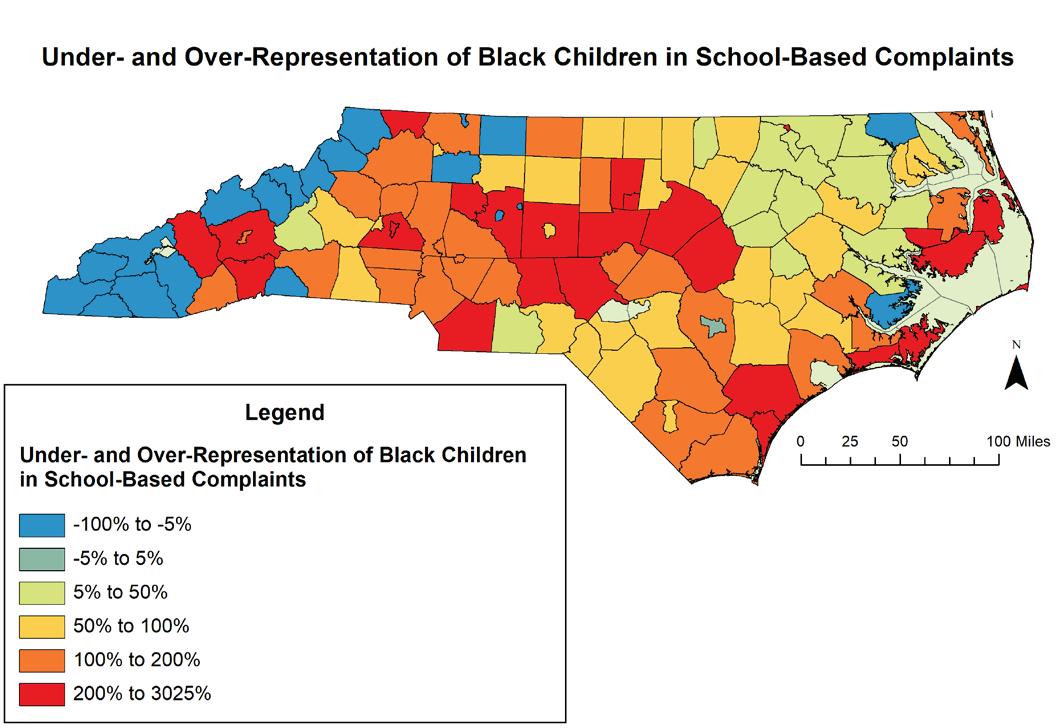

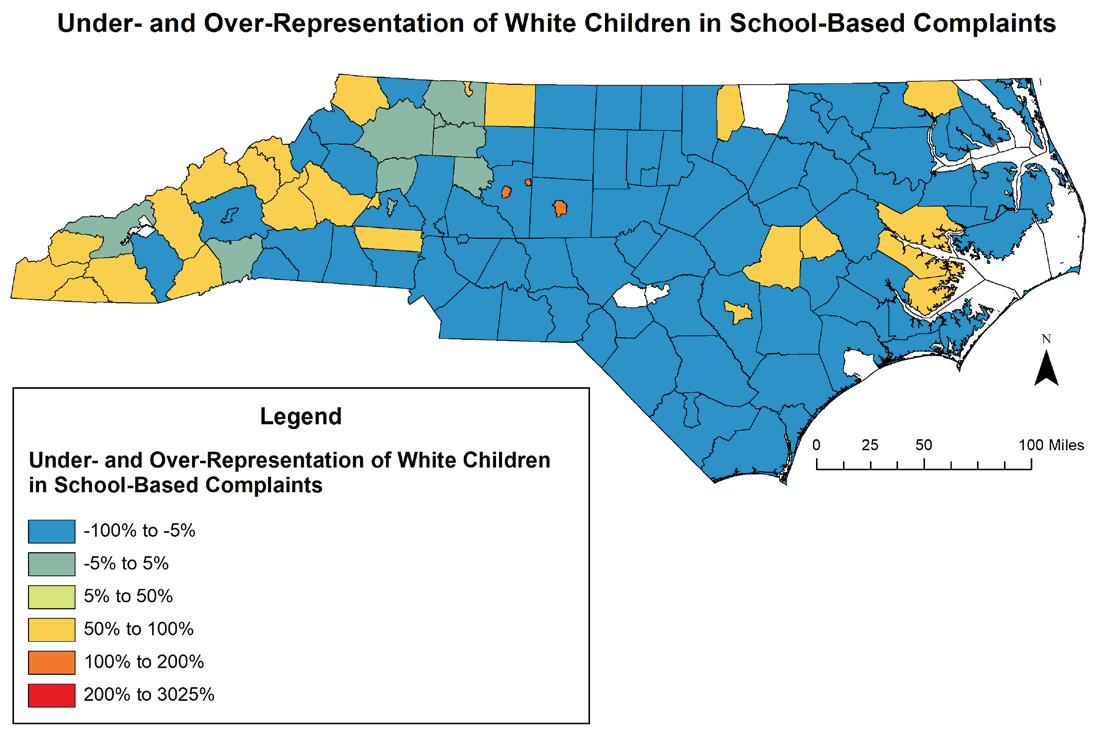
Source: Southern Coalition for Social Justice analysis, 2019 Racial Equity Report Card data sources
While the over-representation is lower for Latine children than for Black children, Latine children are over-represented on the district level by 102% in Carteret and 144% in Avery.68 See appendix for additional district-level data.
The most common school-based complaints in 2019 simple assault, disorderly conduct, simple a ray, truancy, and communicating threats69 were for minor o enses that are subjectively defined and often age appropriate aspects of adolescent development. Simple assault charges might be filed as a result of a school fight. “Simple a ray” is a term used to describe a fight in a public place that causes others to be fearful. An example is an argument between two people that escalates with a danger that a bystander may join in. Disorderly conduct is a vague term that can include such incidents as cursing at a teacher. Each of these behaviors could and should be handled at the school level without forcing students into a system of punitive responses harming their academic, social, and mental wellbeing. Instead,
these school-based complaints comprise a large percentage of the most common juvenile complaints overall (see Figure 3).
Figure 3: A large percentage of the most frequently charged juvenile o enses in 2019 stemmed from school-based complaints
Source: Analysis of North Carolina Department of Public Safety, 2019.

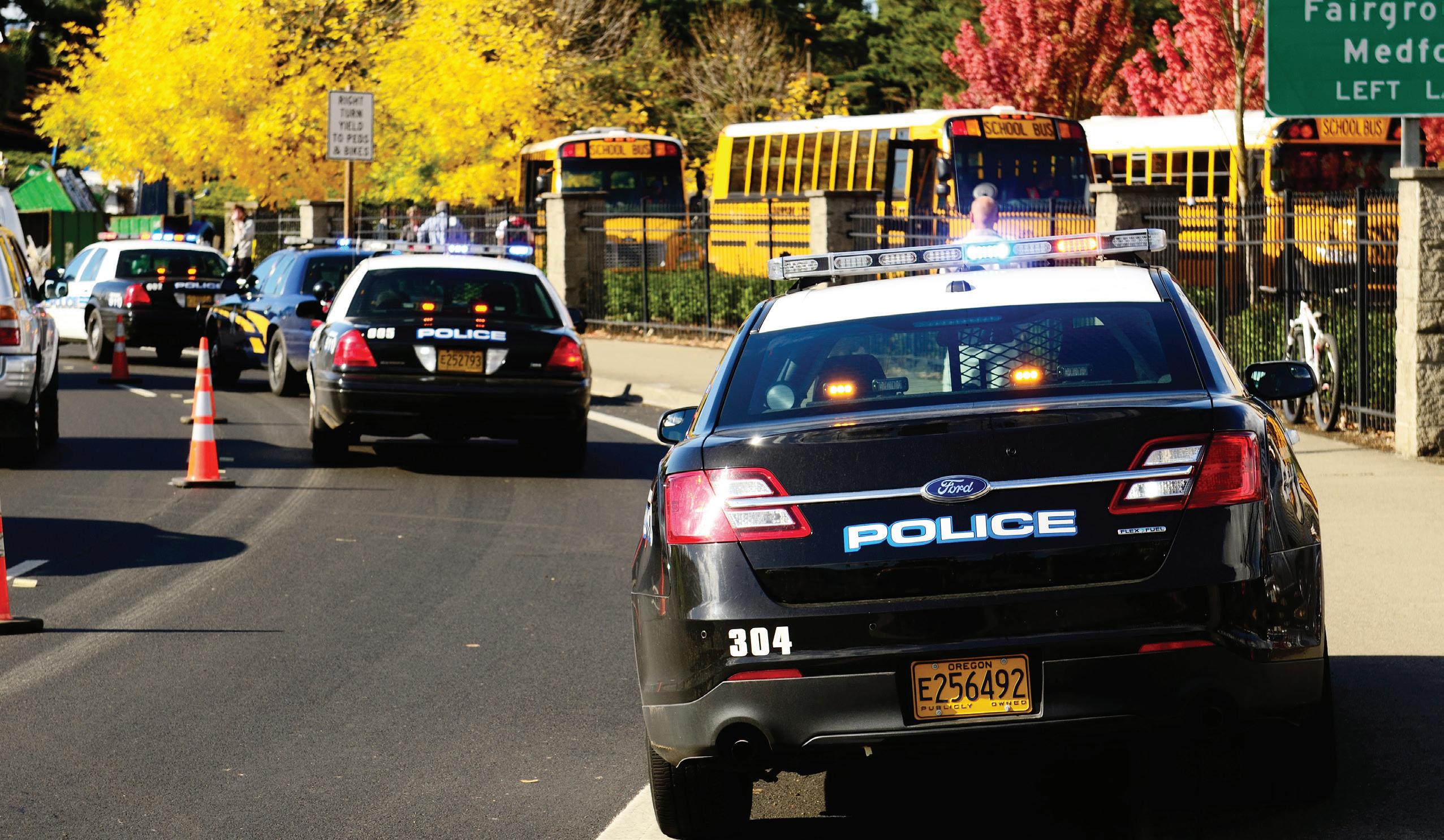
Placing police in American schools dates back to the 1940s. The first o cial school resource o cer positions were created in 1953 in Flint, Michigan to “improve community relations between the city’s youth and the local police department.”70 After favorable media attention, cities across the country began adopting this model. The proliferation of policing Black and Latine youth in schools is contemporary with school integration e orts, as white communities argued that desegregation would bring disorder to white schools.71
process in 1971 with the Supreme Court ruling in Swann v. Charlotte-Mecklenburg Schools allowing for desegregation through busing.73 Despite the e orts of many to stifle desegregation, over 90% of North Carolina’s school system was desegregated shortly after the Supreme Court decision in 1972.74
In 1974, Forsyth County established what is now the longest- running school policing program in North Carolina.75 72 SRO programs were then rolled out on a small scale with one o cer patrolling 10-11 schools throughout the state in 1995. As of 2018, there were 1,200 SROs employed in North Carolina schools.76 Driven mostly by support from the state, in 1973 the N.C. Department of Justice created the N.C. Justice Academy which, for decades, has served as the supported training pathway for police to receive SRO training77 — training wholly inadequate for educational settings. training facilities were unequal and unconstitutional in desegregation. schools.
School policing in North Carolina emerged under conditions of change and civil unrest in the 1970s. The Brown v. Board of Education decision declared that separate educational facilities were unequal and unconstitutional in 1954, yet it took nearly twenty years for North Carolina to begin desegregation.72 North Carolina began the school desegregation
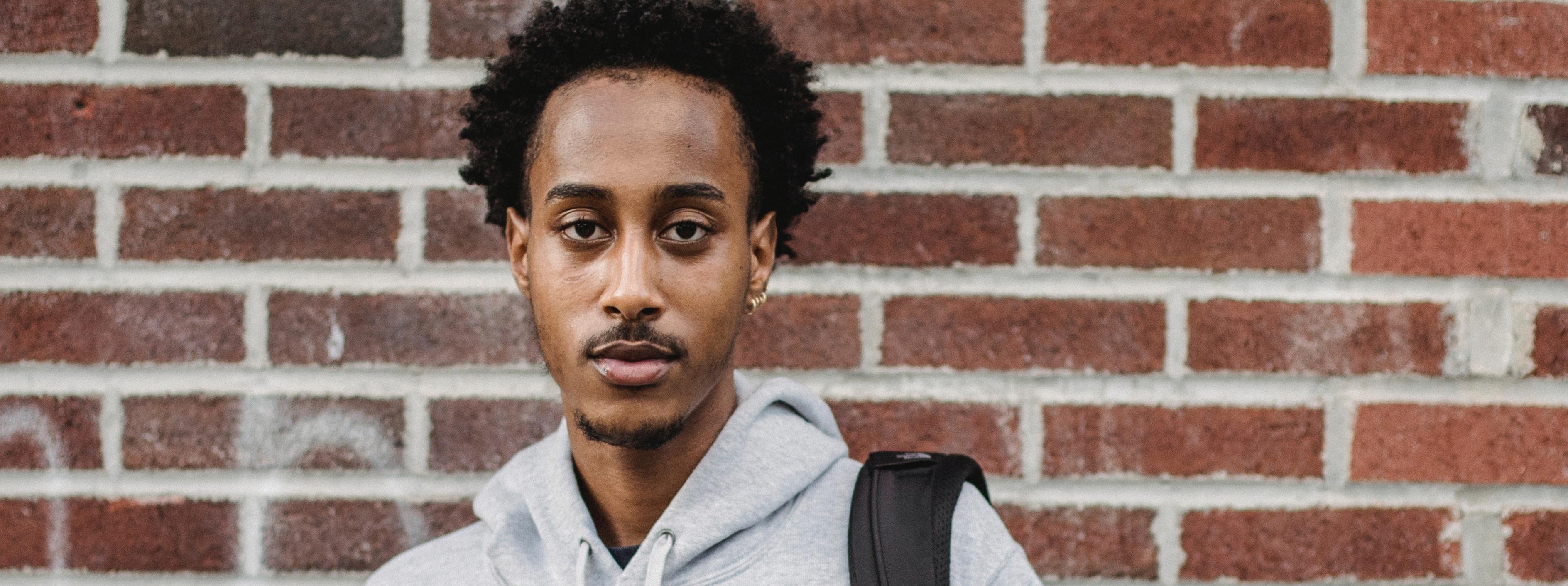
In
Complaints — legal documents filed with the juvenile court alleging a child is a “juvenile delinquent” under state law or local government ordinance — are the entry point to North Carolina’s juvenile criminal legal system.78 In 2020, Black children represented approximately 23% of the youth population, but represented over half (56%) of juvenile complaints. White children, on the other end of the spectrum, represented about 52% of the youth population in North Carolina, but only 28% of juvenile complaints.79
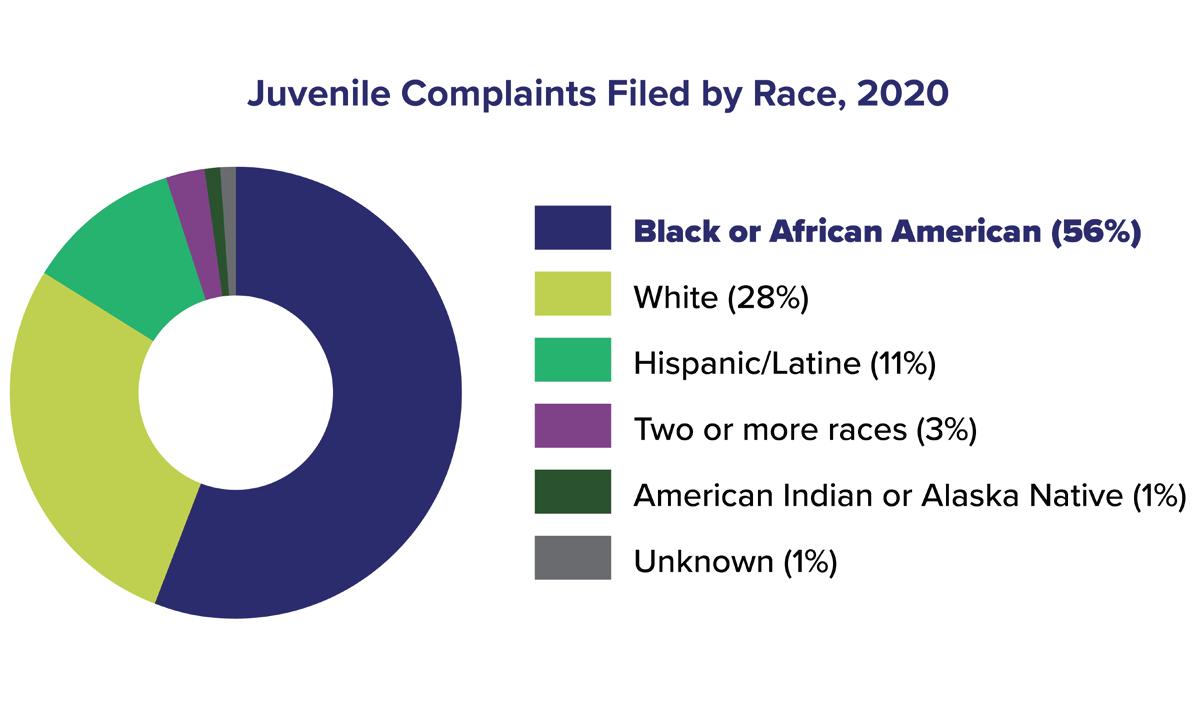
Source: North Carolina Department of Public Safety, 2020
Similar to the school-based complaints, the majority of youth overall are entering the state’s juvenile criminal legal system for minor o enses, and even age-appropriate behaviors. The majority (58%) of complaints received in 2020, for example, were for minor, status, or infraction o enses (see Figure 5). 80
Although some complaints are dismissed or diverted, a staggering number continue to court. In 2020, 5,075 youth in North Carolina were funneled into the court system.81 The previous year - in 2019 - 4,983 young people (58% of complaints) were approved for court. 82
North Carolina counties with large populations, such as Mecklenburg and Wake Counties, correspond to some of the largest juvenile complaints numbers (3,012 and 1,839 respectively); however, the data show the highest rates of complaints by population in Montgomery, Jones, Perquimans, and Halifax Counties.83 Notably, Perquimans and Halifax, located in Northeastern North Carolina’s Black Belt, also struggle economically. Both have higher poverty rates than the state average and job growth has been stagnant — in fact, these counties are losing jobs year-over-year.84
Juvenile Complaints Filed by Type, 2020
Minor, Class 1-3 (53%)
Serious, Class F-I, A1 (35%)
Violent, Class A-E Person (7%)
Status (5%)
Infraction (0%)
Source: North Carolina Department of Public Safety, 2020. Infraction is defined as a non-criminal violation of law, punishable by up to a $100 fine (i.e. motorcycle/moped violation, riding a bicycle/skating in a public area, etc.) (NC Gen. Stat. Chapter 14-3.1), Status is defined as o enses that are not crimes if committed by adults (i.e., truancy, running away from home, ungovernable). The terms “status” and “undisciplined” are interchangeable (NC Gen. Stat. Chapter 7B-1501 (27)). Minor Class 1 - 3 is defined as Misdemeanor classes (i.e., shoplifting, communicating threats, disorderly conduct at school, etc.) (NC Gen. Stat. Chapter 14); Violent Class A - E is defined as person and violent o enses (i.e., robbery, kidnapping, attempted murder, etc.) (NC Gen. Stat. Chapter 14); Serious Class F - I, A1 is defined as F-I felony class - serious property or weapons o enses; A1 misdemeanors - assault (NC Gen. Stat. Chapter 14).
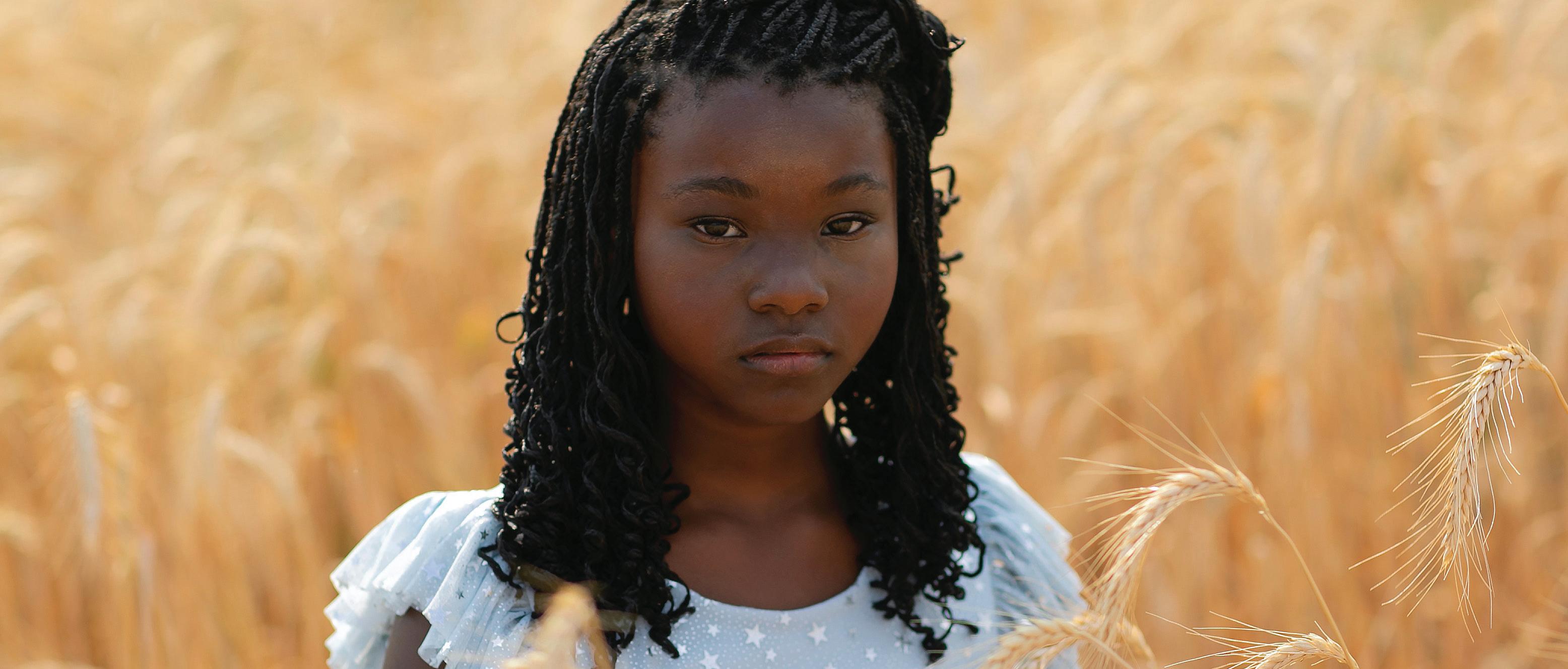
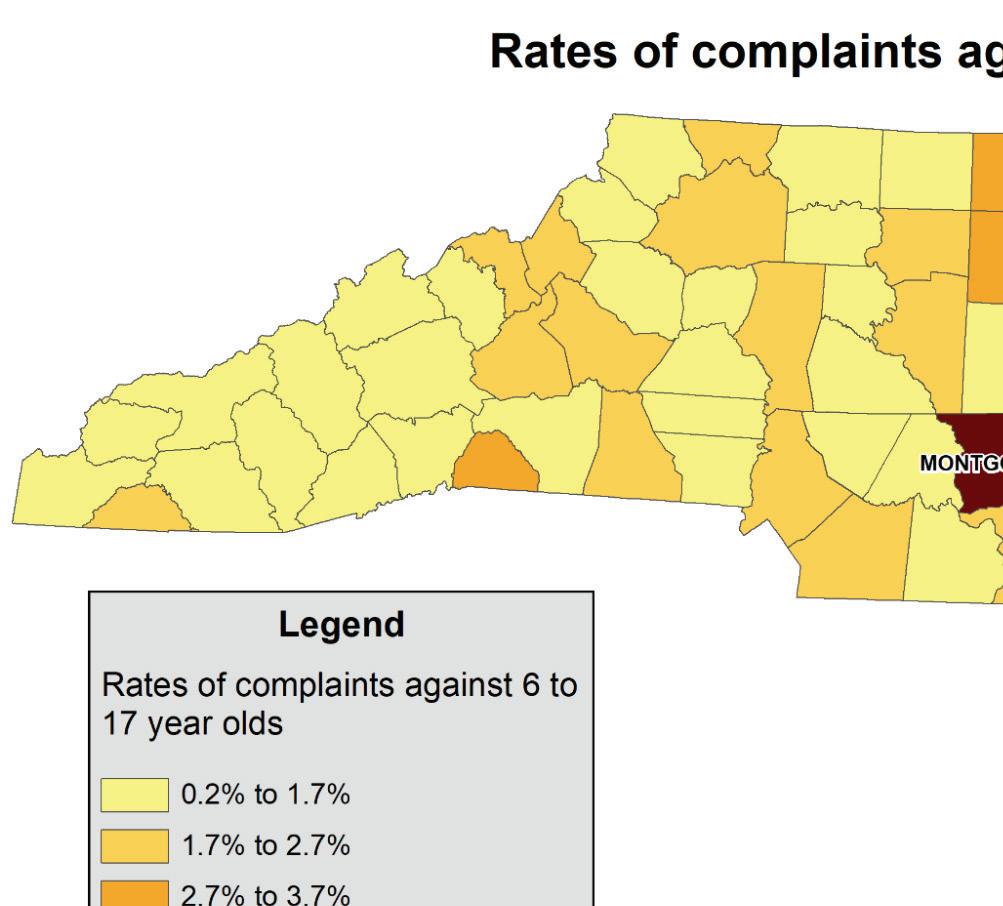

The founders of the original 19th-century youth institutions sought to instill Protestant values in primarily white children through structure and discipline, rather than as a means of punishment. However, the purpose and demographics of these institutions shifted following the Civil War. Youth detention facilities transitioned from institutions of reform for primarily white children to a means of punishment for overwhelmingly children of color, in particular Black children. Nearly half of all incarcerated youth were not placed in youth facilities at all but rather were still placed in adult detention facilities.85
In 2020, North Carolina detained 2,208 youth in juvenile detention facilities and incarcerated 142 youth in YDCs.86 The average length of stay in detention centers during this time was 25 days; in youth development centers, the average stay was 14.2 months.87 While the detention of children is unconscionable at all times, North Carolina detained these young people despite a global pandemic which wreaked havoc in jails, prisons, and youth detention centers.
Black youth represented 67% of youth in long- and short-term detention in 2020, despite representing less than a quarter of the state’s population. For comparison, white youth during the same period represent 18% of detention center admissions and 23% of YDC commitments, while representing 54% of the youth population (see Figure 7).88
Figure 7 - Black youth represented 67% of the youth placed in short- and long-term confinement, while only representing about one quarter of the state’s youth population.
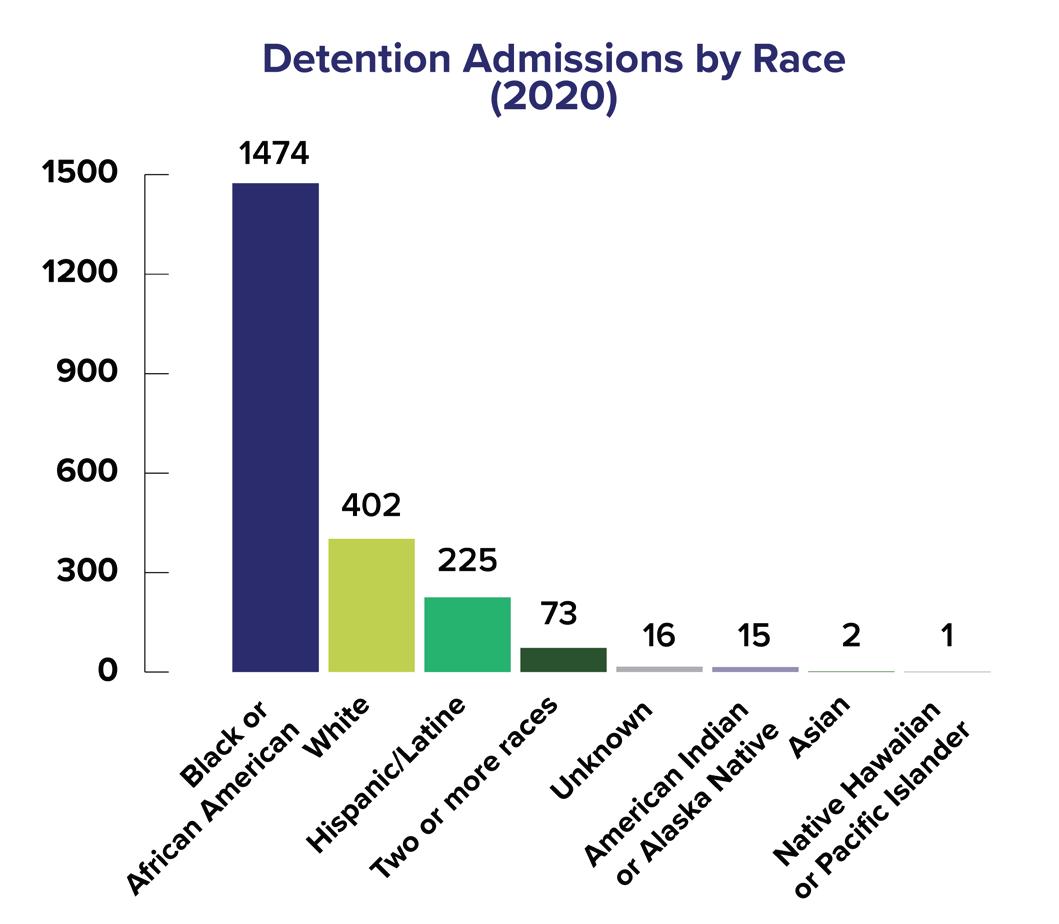

The term “Superpredator” was coined in the 1980s, and popularized by Hillary Clinton during her husband’s presidency in the 1990s. Politicians, like Bill McCollum (RFL), purposefully used loaded and coded language when referring to these youth, calling them “feral, presocial beings with no sense of right and wrong.”89 He would go on to say that America would see an increase of “highly crime-prone males –teenagers from fatherless homes growing up in neighborhoods where gangs, drugs and violence are commonplace and consequences for misbehavior are almost nonexistent.”90
Politicians and members of the media carefully worded superpredator rhetoric to ensure American society internalized the image of the superpredator as youth from Black and Latine communities. The resulting “tough-on-crime” policies from these media assaults targeted youth of color.91 The myth that began in the 1980s bolstered harmful legislative proposals, such as those that sought to try children and teens as adults, build additional youth prisons, and codified “three-strike rules” for youth o enders.92
Projection: Spoken Word by Hausson Byrd

The criminalization of youth costs North Carolina millions of dollars each year, funding a misguided, harmful, and racist system paid for by a regressive state tax system. The cost, however, is highest for our state’s youth, particularly youth of color. We can’t a ord to keep funding a system that criminalizes our youth.
Fig 8: The largest percentage of the $174 million allocated to the North Carolina juvenile criminal legal system went to court services, followed by youth detention and incarceration

In 2020, North Carolina spent almost $174 million disciplining, policing, and incarcerating our state’s children.93 Figure 8 provides a breakdown of how funds were distributed in 2020. Of the total $174 million, our state spent approximately $47 million on court services and almost $40 million to detain and incarcerate youth. Figure 9 shows that total state appropriations to North Carolina’s juvenile criminal legal system have increased over time, with the largest program increase exhibited in court services.
Taxes and the North Carolina Budget: Who Pays?
Through individual income taxes, sales taxes, and corporate income taxes, the people and businesses of North Carolina contribute to the state budget, and in doing so, we contribute to its priorities.94 Taxes are essential for supporting thriving communities, and budget allocations should reflect our values. It’s important to note, however, that we don’t all contribute equally.
The vast majority of state tax systems in the U.S. are upside-down by design, requiring low-income taxpayers to pay a higher share of their income than high-income taxpayers.95 Tax systems that rely on the
Source: North Carolina Department of Public Safety, 2020. The largest percentage of the total appropriations were allocated to court services at over $47 million, consistently the largest percentage of the system funding allocation over time. The next largest budget allocation (a combined $40 million) is allotted to youth detention, specifically the two types of “secure commitment centers for youth.” In contrast, only 16%, or $27 million, is allocated to Juvenile Crime Prevention Councils (JCPC).

lowest-income earners to pay the largest proportion of their income in local and state taxes are inequitable. North Carolina’s state tax code is no exception – a recent state comparison places it at 31st most regressive in the country.96 Regressive tax structures place a disproportionate burden on communities of color. Our history of racism in public policy stretching from redlining to predatory lending to mass incarceration guarantees communities of color are overrepresented as low-income tax filers.97
Youth incarceration has proven to be not only ine ective at delivering on public safety promises, but also a source of severe immediate and long-term harms to impacted youth, their families, and communities. Despite this evidence, in 40 states across the country, taxpayers spend at least $100,000 annually for each child’s confinement.98 North Carolina is no exception, spending over $26 million in FY 2019-2020 to incarcerate 169 youth across YDCs, translating to a cost of $156,000 per child per year, an average cost of about $106,00 per bed (see figure 10).99
Figure 9: Over the last six years, total state appropriations to the North Carolina’s juvenile justice system have steadily increased
↑37.5%
Source for dollar amounts: North Carolina O ce of State Budget Management, 2020a, 2020b. Note that there is a slight discrepancy in the numbers reported by this o ce, and those reported by the Juvenile Justice Program’s Annual Reports. The largest year-by-year increase was between FY18-19 and FY19-20, accompanying the implementation on December 1, 2019 of the “Raise the Age” initiative which extended juvenile jurisdiction to 16 and 17 year olds. The additional funding primarily went toward youth detention centers, Community Program Services, Juvenile Crime Prevention Councils, and Juvenile Court Services.
This does not include the cost to detain youth in Youth Detention Centers pending trial
Figure 10: North Carolina spent over $26 million to incarcerate 169 youth in FY 2019-2020.
Source: North Carolina Department of Public Safety, 2020. While the average daily population across the four facilities was lower in FY 20192020 due to COVID-19, the operating cost remained the same96

North Carolina’s spending on youth incarceration compared to spending on youth education
• North Carolina spent 29 times as much to incarcerate one child than to fund a Pre-K slot for a child in 2019-2020. 100
• The same year, North Carolina spent almost 15 times as much to incarcerate one child than to educate a student enrolled in the state’s K-12 public school. 101
North Carolina spent 29 times as much to incarcerate one child than to fund a Pre-K slot for a child in 2019-2020.97
• For the cost of incarcerating one youth for one year ($155,734), North Carolina could cover the cost of in-state tuition and fees for 23 students for one year. 102
Incarcerated child
Pre-k Slots
The same year, North Carolina spent almost 15 times as much to incarcerate one child than to educate a student enrolled in the state’s K-12 public school.98
Incarcerated child
Enrolled Students
For the cost of incarcerating one youth for one year ($155,734), North Carolina could cover the cost of in-state tuition and fees for 23 students for one year.99
Students’ Tuition and Fees
Incarcerated child
The short- and long-term impacts of contact with the criminal punishment system and youth incarceration are well documented and extend much beyond the fiscal cost. By realigning public spending with community priorities and investing in youth supports, preventative resources, and community-led alternatives to youth criminalization, we can prioritize the healthy development of our community’s young people with a strength-based approach grounded in dignity, respect, and support.
Over the last three decades, local, state, and national government budgets have increased spending on criminalization while cutting investments designed to nourish and stabilize local infrastructure in Black, Latine, and Indigenous communities. Acknowledging and addressing the harm of purposeful divestment from communities must be paired with meaningful investments in these communities, as determined by these communities.103
Research has shown both the positive public safety and community health results of investing in local support systems outside of corrections and law enforcement. Directing
public resources to these community-led initiatives allows for targeted interventions and programs that meet communityidentified priorities.104 In addition, by working with communities to develop their own public safety strategies, community-based organizations can shift resources and power back to communities grappling with the realities of criminalization. Community-driven public safety initiatives are growing across the country through a variety of funding models, which includes direct divestment from the criminal punishment system.105
Police-Free Schools. To foster a truly safe learning environment, our schools must be police-free. Schools exacerbate the school-to-prison pipeline when they employ school resource o cers (“SROs”). While purported to protect the student population, SROs create stressful and distracting environments, while surveilling and criminalizing normal youth behavior. School policing disproportionately a ects students of color, students with disabilities, immigrant students, and LGBTQIA students.106
• She Safe, We Safe is a transformative movement campaign that grew out of BYP 100 - a national member-led organization of 18-35-year-old organizers and activists creating justice and freedom for all Black people. The goal of She Safe, We Safe is to divest from police and invest in community-determined programs that address gender-based violence impacting women, girls, femmes, and gender nonconforming people in Black communities.

• Durham Beyond Policing (DBP) is a grassroots coalition that came together in 2016 to give voice to community members opposed to the investment of $70 million tax dollars to build a new police headquarters in Durham. The campaign aims to divest from policing and prisons and reinvest municipal resources into supporting the health and wellbeing of Black and Latine communities, benefiting all community members in Durham. In 2020, DBP successfully organized for a communityled safety and wellness taskforce.107
• Harm Free Zone grew out of SpiritHouse Inc, a Durham based multigenerational Black women-led cultural organizing e ort working with other local organizations to uncover practices that lift up alternative models to prison. For over a decade, the campaign has engaged community members in Durham and across the South to develop a shared understanding of systemic barriers and to support a community-centered vision that works
toward repairing the damage of racism and oppression by o ering tools and trainings to prevent and transform harm.
• Emancipate NC supports North Carolinians as they free themselves from mass incarceration and structural racism. Through its Justice League, Emancipate NC supports people who have been justice-involved through a paid organizing fellowship. The fellowship is designed to support advocacy and organizing skills and to deploy those skills within active campaigns.
• Ready the Ground Training Team (RGTT) serves North Carolina’s movement with trainings in revolutionary nonviolence and marshaling. Marshals help events go well by welcoming participants, o ering reliable information, embodying the desired tone, and intervening in cases of trouble. RGTT defines trouble as things that interfere with the event’s smooth operation or the clarity of its message.
Participatory Budgeting is a community-level approach to public spending that empowers local community members to make decisions about public budget spending priorities. Originally developed and implemented in Brazil in 1989, the approach has made its way to localities in the U.S. over the last few decades. Models have ranged from participatory budgeting for federal community development funds in Oakland to a youthonly process in Boston.108 In North Carolina, both Durham and Greensboro have now implemented participatory budgeting.
Participatory Action Research (PAR) is a research approach that redefines who has the expertise to produce knowledge and honors a ected communities as the experts throughout the research process. The information that informs governmental decision-making is often gathered, analyzed, and presented absent impacted communities. Acknowledging and addressing power dynamics in the research process is critical to the creation of equitable policies. PAR engages with communities at all levels of the research process and strategy development, and generates findings that provide meaningful insights and resources to communities.
Community-led Solutions:
Participatory Budgeting in Durham In 2018, the Durham City Council approved a participatory budgeting process with $2.4 million in funding. Each of the City Council wards were awarded up to $800,000 for
residents age 13 or older to make decisions around one-time projects in the community. Since its launch, over 10,000 residents and students have participated in the process, and community-reviewed projects from the first cycle of the process are currently being implemented. In response to community feedback, the scope of the second cycle has shifted to support social and economic programs in the wake of the pandemic.
PB Durham formed a grant program for Durham-based nonprofits and community organizations o ering COVID-19 relief assistance. To do this, the City Council approved $1 million for organizations directly serving communities most adversely impacted by the current pandemic as well as organizations addressing issues contributing to racial, economic, and social inequities in Durham. More than 60 Durham-connected nonprofits and community organizations submitted grant applications to PB Durham to request funding. Those 60 applications were narrowed down to 31 grant proposals, and residents 13 years and older were invited to vote to select the winning organizations to implement their projects over the next two fiscal years. The nonprofits and community organizations with the most votes were eligible to receive up to $50,000 in grant funding through this program. After a monthlong voting process, residents selected 22 Durham-connected non-profits to provide services in response to the pandemic.
Durham Youth Listening Project: The City of Durham O ce on Youth launched the Youth Listening Project in 2019 to hear from Durham’s young people about their needs and dreams, and their thoughts on the resources
in their communities. The o ce worked in partnership with youth ambassadors, community partners, and consultants to host listening sessions and do deep community engagement. The project’s final report of recommendations serves as a guide for resource allocation and action, and reflects the perspectives of hundreds of young people, their caregivers, and community members who work with and support youth.
Youth heal in loving communities, not courtrooms and cages. Young people in North Carolina deserve comprehensive mental health support from birth to adulthood. This involves parental support through doulas and infant-toddler programs, access to universal Pre-K, and early intervention through mental health services and adverse childhood experiences (ACES) screenings. As North Carolina children enter schools and prepare for college, they deserve supportive learning environments without police harassment and exclusionary discipline.
Maternal mental health services and early prenatal care should begin well before a child is born. This can be the di erence between life and death for the youngest North Carolinians. According to the 2021 NC Child Health Report Card, African-American or Black babies in North Carolina are more than twice as likely to die before their first birthday as compared to white babies.109 Doulas and supportive newborn services that provide guidance and emotional support to birthing and new parents, can

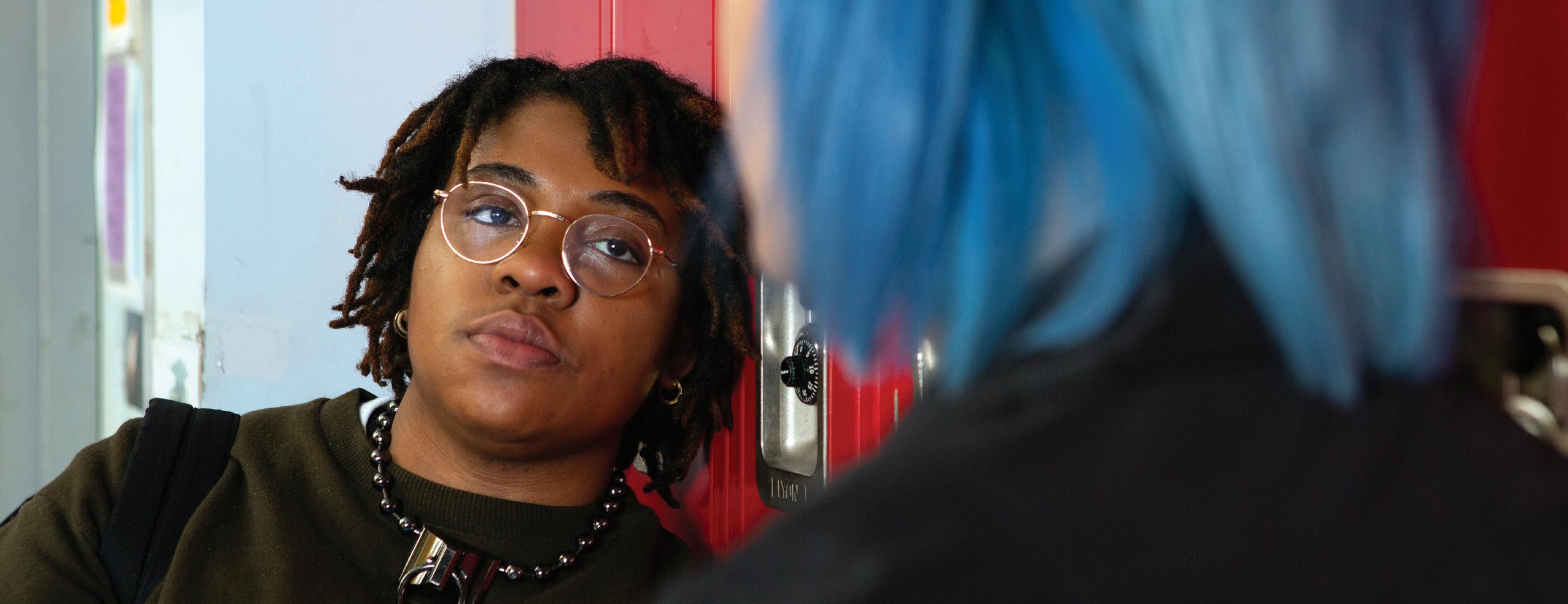
play a significant role in improving infant and maternal health and mitigating medical racism and the criminalization of Black mothers dealing with postpartum depression.
Community-Led Solutions:
Equity Before Birth helps Black women in the Triangle region connect with doulas and provides financial support to birthing parents. In the absence of paid leave policies, the organization supplements income and covers the cost of essential services and supports for Black moms, birthing people, and their infants.
MAAME Doula Collective trains doulas to serve and empower Black, Indigenous, and other Birthing People of Color and o ers resources, services, and support for holistic health. Maame fills the vital gap for people who are not eligible for public support and not able to a ord these services privately.
Family Connects is an evidence-based model connecting families of newborns to community-based care and resources through universal postpartum nurse home visiting. Research on the model has shown many positive outcomes for families, including: safer home environments; increased positive parenting behaviors;
decreased postpartum depression and anxiety; and decreased number of investigations for child maltreatment. Family Connects International, based in North Carolina, supports communities across the U.S. to implement the model.
From early childhood, Black children are criminalized for age-appropriate behavior. In North Carolina, during the 2017-2018 school year, 48% of preschool children who received one out-of-school suspension were Black. Among preschool children who were suspended more than once, 64.5% were Black.110 Suspending Black preschool children for child-appropriate temper tantrums initiates the school-toprison pipeline while failing to address the root causes of emotional distress.111 This is why universal pre-kindergarten (Pre-K) must have on-site school psychologists.112 Universal Pre-K should also provide social and emotional learning (SEL), mindfulness training, and mental health education while eliminating suspensions. This is vital to promoting healthy self-management of
emotions, identifying trauma responses, and preventing contact with law enforcement.113
Instead of criminalizing youth who lack prosocial behavior due to trauma, disabilities, or mental health conditions, school sta should proactively use SEL and mental health interventions. Including SEL in public school curriculum would lead to improved student behavior and more appropriate reactions from students and teachers when misbehavior inevitably occurs. If these changes are implemented, all children entering middle and high school would have the emotional and mental health training to support themselves and others. When mental health problems arise, school psychologists, and not police o cers, would intervene.
Community-led Solutions:
Social/Emotional Interventions for Young Children (SecurePath) is a comprehensive mental health service for young children in Wake County that is provided at the child’s home or preschool. North Carolina should invest in replicating the SecurePath program model so that young children from birth to age 5 across the state can access home-based mental health services that address social, emotional, or developmental challenges.
SAFEChild - Stop Abuse For Every Child –supports families to nurture thriving children.
Each year, SAFEchild protects 13,000 children, empowers 1,650 parents through education and support programs, and guides 12,000 Wake County first graders through the school-based Funny Tummy Feelings program. SAFEChild screens for adverse childhood experiences (ACES)
that can identify the need for parenting classes and child abuse prevention.
Emerge Pediatric Therapy, which provides children with various therapeutic services, should also receive investment to serve more children on Medicaid. Through their services, Emerge Pediatric Therapy helps children develop and advance their social and communication skills and sensory and emotional regulation skills so that they and their families can thrive. Black children, including those with disabilities, deserve resources that help them selfsoothe and reclaim agency over their bodies when they are in distress.
Criminalizing Black and Latine youth while providing little to no mental health care can have dangerous consequences. Almost 10% of Black North Carolina high school students reported in 2019 that they attempted suicide in the past year. For Latine students, this number was 15.4%.114 Despite these alarming statistics, North Carolina schools are experiencing a shortage of school psychologists – with a ratio of one school psychologist to roughly 1,800 students.115 The recommended ratio, endorsed by the National Association of School Psychologists, is one school psychologist (if not more) for every 500 students.116
Implementing school-based mental health services is essential to repairing the psychological harm of criminalizing students for their identity. Targeting and incarcerating students negatively impacts their mental health and increases the risk of future contact
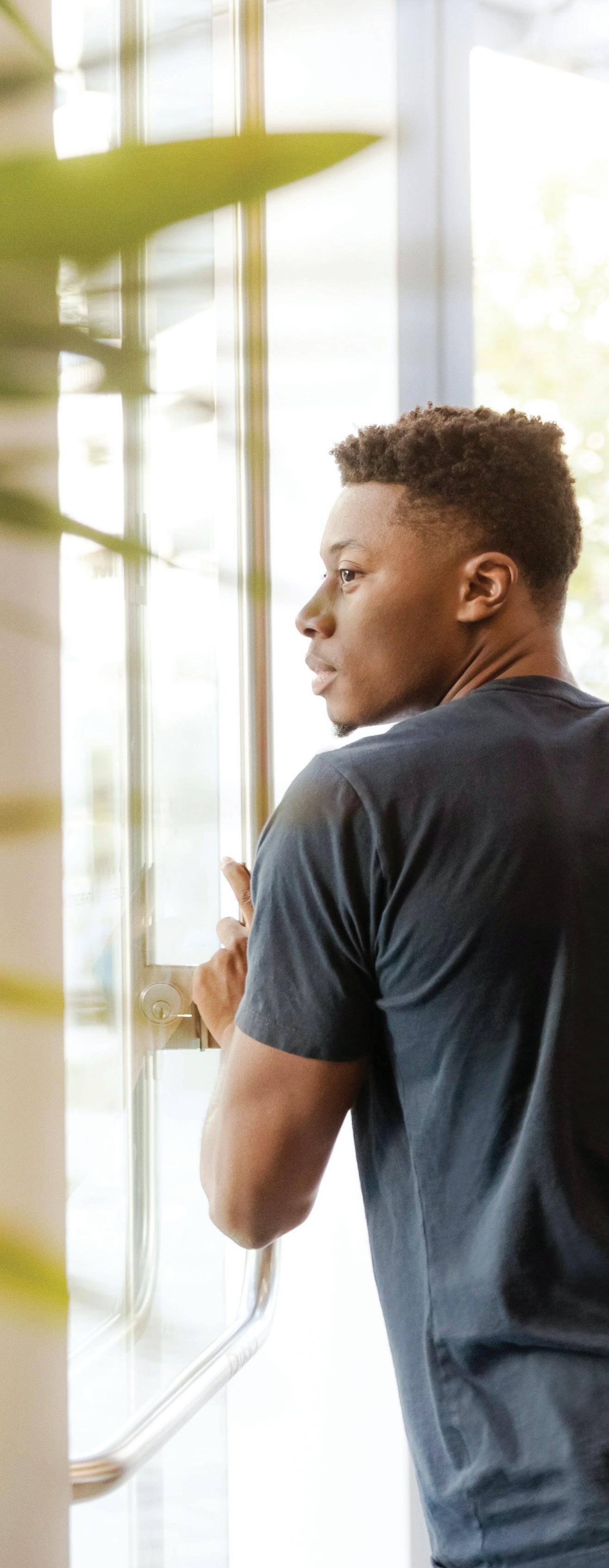
with the criminal legal system, which only creates additional psychological trauma. Youth are six times more likely to complete evidence-based treatment at school compared to other community settings.117 Without police, schools can be therapeutic spaces.
To e ectively provide school-based mental health support district-wide, North Carolina must follow the demands of students who want comprehensive school mental health systems (CSMHS)118 and greater choice of the care they receive. Youth in North Carolina have expressed a desire for:
• On-site, fully sta ed mental health spaces at every school
• Culturally competent mental health professionals trained in student-centered, trauma-informed care and other treatment modalities that a rm the identities of marginalized students, including those in Black, Latine, Asian, LGBTQIA+ and gender non-binary communities119
• After-hours availability
• Student-choice of mental health professionals and treatment plan120
Counselors not cops. Law enforcement o cers do not have training in developmental psychology or treatment modalities tailored to marginalized communities. North Carolina school resource o cers may have just 12 hours of adolescent mental health training compared to the years of study that school psychologists have.121 The assumption that law enforcement o cers can serve as de facto therapists is rooted in the false assumption
that under-sourced schools are safe as long as Black and Latine students are policed.
Community-Led Solutions:
Recenter @ Riverside is a pilot program by Rebound Alternatives at Riverside High School in Durham, NC rooted in the belief that in order to avoid suspensions, students must be fully supported.122 Recenter is sta ed by a licensed clinical social worker associate who provides counseling and referrals for mental health assessments. Students can go to Recenter for both conflict resolution and restorative circles. Recenter also o ers support for students returning from out-ofschool suspension and advises teachers on implementing restorative practices.123
When mental health services are o ered to students, these programs must be disconnected from carceral systems that criminalize mental health challenges, trauma, and poverty. Mandated reporting should be directed to organizations that keep marginalized communities safe through mutual aid, police-free crisis support, and healing justice holistically responding to generational trauma and violence through collective practices.
Community-Led Solutions:
Time Out Youth (TOY): o ers supportive resources - including temporary housing, laundry services, and food delivery services and clinical services to LGBTQIA+ identified youth ages 13 20. TOY also provides LGBTQIA+ a rming therapy
sessions. 56 youth received 700 free sessions in 2020.124 TOY reports that youth who received these sessions reported a decrease in depression, anxiety, and isolation.125 CSMHS programs are more e ective when they funnel students towards healing, not harm.
In order to disrupt the school-toprison pipeline, we must also disrupt the school-to-foster care and the school-to-hospitalization pipeline.
In 2019, almost 1 in 3 foster care children in North Carolina were Black.126 School police o cers are the main drivers that funnel Black children from the classroom to the child welfare system. School police are an extension of child welfare surveillance because they use mandated reporting laws to justify child welfare investigations.127 The disproportionate use of policeinitiated child welfare involvement is a major reason why almost half of all Black children will experience a child welfare investigation before turning 18.128
Abrupt, unstable child welfare placements can lead to criminalization. Youth who are placed in group homes are two and a half times more likely than even youth in foster care families to be involved with the criminal punishment system.129 Replacing school police with culturally competent school psychologists as mandated reporters can significantly decrease the number of Black children needlessly entering foster care, and ultimately, courts and cages.
Community-led Solutions:
Youth Villages, a national organization that uses MST, reports that youth have reduced contact with law enforcement while staying in their homes. In order to make this program more sustainable, North Carolina should invest in Youth Villages to continue the ability to have reduced caseloads for therapists who often drive across the state with extensive paperwork requirements. Organizations like Youth Villages also need investment to ensure the recruitment, hiring, and training of therapists who come from the same marginalized communities to which youth belong. Youth should see a reflection of themselves in both their treatment and mental health professionals.
Restorative justice is a framework grounded in the values of showing respect, taking responsibility, strengthening relationships, and valuing people beyond mistakes, all while rejecting the involvement of punitive systems. It brings together those who received the harm and those who enacted the harm and community members to address the harm caused by the o enders and decide, as a community, how to repair that harm.
Transformative justice complements restorative justice practices and focuses not only on the individuals involved, but also on the systems and structures generating harm. Communities practicing transformative justice look for ways to create support systems outside of the police and the criminal punishment system. Restorative justice
aims to heal the harm that has already occurred, and transformative justice aims to prevent future harm.130 When implemented appropriately, this framework results in better outcomes for individuals and communities. 131
Racial inequities in discipline. Although North Carolina has ended harmful “zero tolerance” disciplinary policies, the data continues to show alarming racial disparities in student discipline rates.132 Black students experience out-of-school suspensions and in-schoolsuspensions at nearly twice the rate of the state average.133 In addition to receiving the highest number of disciplinary actions, Black students also receive the longest suspension terms in North Carolina. In the 2018-2019 school year, Black students were four times as likely as their white counterparts to receive short-term suspensions.134 Exclusionary discipline policies have created a pervasive, negative impact on students of color and their educational outcomes.
Harm Free Zone Transformative Justice
Training, hosted by Spirit House, fosters grassroots leadership in the Durham community. Through a popular education curriculum that infuses art, culture, and history, participants collectively develop tools and strategies to confront and transform harm.
Student U empowers first-generation college students in Durham Public Schools, their families, and educators through a commitment to supporting student and family-led advocacy and change e orts. Student U believes in operating with a restorative mindset, a

concept rooted in showing respect, building community, and taking accountability when a harm has occurred in the community. Student U shares a restorative practices framework and o ers training on leading restorative conversations and repairing harm circles.
Rather than focusing on fixing problems, positive youth development frameworks build on young people’s strengths and use a comprehensive approach centering on young people’s experiences including education, art, and leadership development. Culturally relevant and accessible extracurricular activities are designed to speak to a youth’s personal and cultural strengths. To achieve this goal, sta must co-create the activity with adolescents and place the voices of adolescents, families, and the communities at the center of programming.
Village of Wisdom supports family organizing and advocacy entities working to eliminate racial injustice in schools by developing tools and resources that help parents, teachers, and students create ideal learning environments for Black and Latine learners.
we are provides anti-racism training for children, families, and educators. They use a three-pronged approach to dismantle systemic racism in education and beyond by o ering summer camps for kids in rising 1st-5th grade, professional development for educators, and workshops for those who are parenting.
Jóvenes Líderes en Acción is an El Centro Hispano initiative to support and provide resources to Latine youth and their families and caregivers. The program creates opportunities for academic advancement and individual growth. The program is free for students as they begin high school and continues until their second year of college.
Children do not live in a vacuum. Because of racist and classist public policies and practices, economic prosperity and opportunity are unequally shared. Supporting families with access to necessities such as quality housing, employment, and healthcare is essential to supporting our state’s youth. The following are essential policies necessary to providing opportunity for all. This list is not exhaustive, but provides options to help ensure that our children and their families all of our children and families in North Carolina have access to opportunity.
• Fully and equitably fund North Carolina’s public schools: Pursuant to a Consent Order resulting from the pivotal Leandro cases, North Carolina must establish a “finance system that provides adequate, equitable, and predictable funding to school districts and, importantly, adequate resources to address the needs of all North Carolina school and students, especially at-risk-students.”135 To date, this requirement has not been fulfilled and North Carolina’s public schools remain inadequately and inequitably funded.136
• Provide access to universal Pre-K for all children: North Carolina’s Pre-K program is one of only five in the nation to meet the benchmarks for a quality, cost-e ective program, yet the promise of accessible, quality early childcare and universal Pre-K for all North Carolina’s children is thwarted by state underinvestment. Despite
increased demand, approximately 7,000 children remain on the waitlist each year.
• Build an a ordable, accessible, and quality child care infrastructure: North Carolina families with young children pay approximately 25% of their income in child care costs.137 In addition, 42% of children under the age of five in North Carolina live in communities where there are too few child care slots for the number of children needing care.138 North Carolina does provide a child care subsidy program, but it is underfunded and its funds are inequitably allocated within the system and around the state.139
• Ensure healthcare for all: North Carolina has one of the highest uninsured rates in the country and is one of only twelve states that has failed to expand Medicaid coverage. Healthcare should not be a privilege of the wealthy. Our state needs to implement policies making healthcare available to all individuals.140
• Enact federal and state paid family and medical leave policies: The benefits of paid family leave include contributions to new children’s health development, improved maternal physical and mental health, increasing a father’s involvement, and enhancing the family’s financial security. Although there has been movement in other states, there is currently no federal or North Carolina requirement that employees receive any amount of paid family leave.141
• Raise North Carolina’s wage to a living wage: Research has shown the multitude of benefits of raising the minimum wage,
including a decrease in poverty rates, progress towards closing the racial and gender wealth gap, improved mental and physical health, and a decrease in child neglect.142 North Carolina’s minimum wage has been stuck at the federal level of $7.25 for over a decade, equating to an annual income for a year-round, full-time worker of approximately $15,080, just above the poverty line for a single individual.143
• Increase funding for a ordable housing: North Carolina currently has a shortage of over 190,000 a ordable rental homes available for low-income renters.144
Since 2010, average rental prices in Raleigh have increased by 57%.145 There is a desperate need for more policies supporting a ordable housing, including an A ordable Housing Fund, eliminating the Faircloth Amendment and funding new public housing options, comprehensive rent stabilization, and much more.
• Provide eviction protection and diversion: The instability caused by eviction negatively impacts children’s education, health and potential future earnings.146 Implementing policies that protect families with children from eviction helps prevent
the damaging impact of displacement.
• Create a reparations fund: Government policies and laws, such as slavery, Jim Crow segregation, racist policies like redlining, and criminal laws targeting Black Americans, have systemically denied Black Americans the opportunities to build wealth.147 As of 2020, the average white family in America had roughly ten times the amount of wealth as the average Black family.148 Black Americans have yet to receive any form of reparations for the state-sanctioned violence and discrimination that has denied them the opportunity to build familial wealth.149 Aside from the economic benefits of reparations, a fund would also initiate much needed reckoning with our nation’s past and a step towards a more understanding future.150
The psychological, emotional, and physical violence of suspensions, police harassment, and other forms of criminalization in a context of underinvestment in communities of color tells Black, Latine, and Indigenous children that their mental and physical wellbeing does not matter. All children deserve a loving world that holistically supports and nurtures their development.

Rates of di erence between enrollment and school-based complaints by district and race (2019-2020)
10 highest rates of di erence between the percentage of Black children enrolled in the district and the percentage of school-based complaints filed against them, showing high over-representation.

10 highest rates of di erence between the percentage of Latine children enrolled in the district and the percentage of school-based complaints filed against them, showing over-representation.
10 lowest rates of di erence between the percentage of white children enrolled in the district and the percentage of school-based complaints filed against them, showing high under-representation.
Source: Southern Coalition for Social Justice analysis, 2019 Racial Equity Report Card data sources.
1: Dr. Ruha Benjamin, Associate Professor of African American Studies at Princeton University. Data & Society transcript (2019, November 26). Race After Technology, E 59. https://listen.datasociety.net/episodes/ race-after-technology/transcript
2: Population Division, U.S. Census Bureau accessed at Annie E. Casey Foundation’s KidsCount Data Center. https:// datacenter. kidscount.org/. Note that the census data provides age breakdowns from ages 5 - 17 while the complaint data is based on ages 6-17. Division of Adult Correction and Juvenile Justice. (2021). Juvenile Justice 2020 Annual Report. North Carolina Department of Public Safety. https://files.nc.gov/ncdps/ documents/ files/JJ-Annual-Report_2020_final.pdf
3: Population Division, U.S. Census Bureau accessed at Annie E. Casey Foundation’s KidsCount Data Center. https://datacenter. kidscount.org/. Note that the census data provides age breakdowns from ages 5 - 17 while the complaint data is based on ages 6 - 17. Division of Adult Correction and Juvenile Justice. (2021). Juvenile Justice 2020 Annual Report. North Carolina Department of Public Safety. https://files.nc.gov/ncdps/documents/ files/JJ-Annual-Report_2020_final.pdf
4: Note that the most recent data likely underrepresent the full scope of school-based referrals and disparities. Raise the Age went into e ect December 2019, followed shortly after by school closing due to COVID-19 in the school year 2020-2021. NC Department of Public Safety notes that 4,200 16- and 17year olds were adjudicated after Raise the Age went into e ect. See Division of Adult
Correction and Juvenile Justice. (2020). Juvenile Justice 2020 Annual Report. North Carolina Department of Public Safety. https:// files.nc.gov/ncdps/documents/files/2020Juvenile-Justice-Annual-Report-FINAL.pdf.
5: Georgetown Law Center on Poverty and Inequality. (2020). Data Snapshot: 20172018, National Data on School Discipline by Race and Gender citing U.S. Department of Education O ce for Civil Rights. 20172018 Civil Rights Data Collecti on. https:// genderjusticeandopportunity.georgetown.edu/ wp-content/uploads/2021/04/National-Dataon-School-Discipline-by-Race-and-Gender.pdf
6: Youth Justice Project. (2020). Racial Equity Report Card 2018-2019. The Southern Coalition for Social Justice. https://rerc. southerncoalition.org/page/report-cardby-agency?var=agencyId:north-carolinanc&var=reportCardStartYear:2018
7: Southern Coalition for Social Justice analysis, 2019 Racial Equity Report Card data sources.
8: North Carolina O ce of State Budget Management, 2020a, 2020b.
9: North Carolina Department of Public Safety (2021), Juvenile Justice 2020 Annual Report. https://files.nc.gov/ncdps/ documents/ files/JJ-Annual-Report_2020_final.pdf
10: North Carolina Department of Public Safety (2021), Juvenile Justice 2020 Annual Report and University of North Carolina. (2021) – the average cost of tuition and fees in 2021-2022 across 16 state schools is approximately $6,552.
11: Marbre Stahly-Butts of Law for Black Lives and Funders for Justice Field
Advisor. What is Divest/Invest? Funders for Justice. https://divest- .org/
12: National Research Council. (2013). Reforming juvenile justice: A developmental approach. The National Academies Press. https://doi.org/10.17226/14685
13: National Research Council. (2013). Reforming juvenile justice: A developmental approach. The National Academies Press. https://doi.org/10.17226/14685
14: Chung, H.L., Little, M., & Steinberg, L. (2005). The transition to adulthood for adolescents in the juvenile justice system: A developmental perspective. In Osgood, D. W., Foster, E. M., Flanagan, C., & Ruth, G.R., On your own without a net: The transition to adulthood for vulnerable populations (pp. 68-91). The University of Chicago Press.
15: See Council for Children’s Rights, Raise the Age North Carolina https://www. cfcrights.org/policy-priorities/rta_2017/
16: Bland, Wyatt (2021, March 31). Raise the Age 2.0: NC remains the only state in America to prosecute sixyear old children in juvenile court.
17: https://www.honeybook.com/widget/ two_roosters_ice_cream_121387/ cf_id/5a76e187dc14520003126718
18: Burrell, S. & Stacy, R. F. (2011). Collateral consequences of juvenile delinquency proceedings in California: A handbook for juvenile law professionals. Pacific Juvenile Defender Center. https://www.courts. ca.gov/documents/BTB24-4D-9.pdf
19: Division of Adult Correction and Juvenile Justice. (2021). Juvenile Justice
2020 Annual Report. North Carolina Department of Public Safety. https://files. nc.gov/ncdps/documents/files/2020Juvenile-Justice-Annual-Report-FINAL.pdf
20: American Civil Liberties Union. (2014). Alone & afraid: Children Held in Solitary Confinement and Isolation in Juvenile Detention and Correctional Facilities. https://www.aclu.org /files/assets / Alonepercent20andpercent20 Afraid percent 20COMPLETE percent20FINAL.pdf
21: Kashani, J. H., Manning, G. W., McKnew, D. H., Cytryn, L., Simonds, J. F. & Wooderson, P. C. (1980). Depression among incarcerated delinquents. Psychiatry Resources, 3(2), 185-191. https://doi. org/10.1016/0165-1781(80)90035-9
22: Barnert, E. S., Abrams, L. S., Tesema, L., Dudovitz, R., Nelson, B., Coker, T., Bath, E., Biely, C., Li, N., & Chung, P. J. (2018). Child incarceration and long-term adult health outcomes: a longitudinal study. International Journal of Prisoner Health, 14(1), 26-33. https://doi.org/10.1108/IJPH-09-2016-0052
23: North Carolina Department of Public Safety. Juvenile Detention Centers. https:// www.ncdps.gov/juvenile-justice/juvenilefacility-operations/juvenile-detention-centers
24: See North Carolina Department of Public Safety. Youth Development Centers. https:// www.ncdps.gov/juvenile-justice/juvenilefacility-operations/youth-development-centers
25: North Carolina Department of Public Safety. Youth Development Centers. https:// www.ncdps.gov/juvenile-justice/juvenilefacility-operations/youth-development-centers and Division of Adult Correction and Juvenile
Justice. (2021). Juvenile Justice 2020 Annual Report. North Carolina Department of Public Safety. https://files.nc.gov/ncdps/documents/ files/2020-Juvenile-Justice-Annual-ReportFINAL.pdf. In 2020, four children age 13; 20 children age 14; 38 children age 15; 52 children age 16; 25 children age 17; and 3 18-year olds were committed to YDCs.
26: Barnert, E. S., Dudovitz, R., Nelson, B. B., Coker, T. R., Biely, C., Li, N., & Chung, P. J. (2017). How does incarcerating young people a ect their adult health outcomes? Pediatrics, 139(2), 2016-2624. https://doi.org/10.1542/peds.2016-2624
27: Barnert, E. S., Dudovitz, R., Nelson, B. B., Coker, T. R., Biely, C., Li, N., & Chung, P. J. (2017). How does incarcerating young people a ect their adult health outcomes? Pediatrics, 139(2), 2016-2624. https://doi.org/10.1542/peds.2016-2624
28: National Juvenile Justice Network. (2016). Improving Educational Opportunities for Youth in the Juvenile Justice System. https:// www.njjn.org/uploads/digital-library/NJJN_ Educational%20Re-entry-snapshot_Mar2016_ FINAL.pdf citing Federal Interagency Reentry Council. (2012). Reentry myth buster: On youth access to education upon reentry.
29: Division of Adult Correction and Juvenile Justice. (2020). Juvenile Justice 2019 Annual Report. North Carolina Department of Public Safety. https://files.nc.gov/ncdps/documents/ files/JJ-Annual-Report_2019_final.pdf
30: MacDougall, L. (2017, May 25). The e ect of youth incarceration on siblings and the family. Shared Justice. http:// www.sharedjustice.org/domestic-
justice/2017/5/25/the-e ect-of-youthincarceration-on-siblings-and-the-family
31: MacDougall, L. (2017, May 25). The e ect of youth incarceration on siblings and the family. Shared Justice. http://www.sharedjustice. org/domestic-justice/2017/5/25/the-e ect-ofyouth-incarceration-on-siblings-and-the-family
32: Kollmann, S. (2018). Parents as partners: Family connection and youth incarceration. Children and Family Justice Center. https:// www.law.northwestern.edu/legalclinic/c c/ documents/communitysafetyfeb.pdf
33: See National Juvenile Justice Network. (2018). Supporting immigrant youth caught in the crosshairs of the justice system https://www.njjn.org/uploads/digital-library/ Supporting%20Immigrant% 20Youth,%20 NJJN%20Policy%20Platform,%20 August%20% 202018.pdf?phpMyAdmin= 14730ab3483c51c94ca868bcc a06ef
34: Hunt, H. and G. Nichol. (2021). The Price of Poverty in North Carolina’s Juvenile Justice System. North Carolina Poverty Research Fund. https://law. unc.edu/wp-content/uploads/2021/04/ juvenilejustice-povertyreport2021.pdf
35: Southern Poverty Law Center. (2018, February 12). Destined to fail: How Florida’s jails deprive children of schooling. https:// www.splcenter.org/20180212/destined-failhow-floridas-jails-deprive-children-schooling
36: Benda, B. B. & Tollet, C. L. (1999). A study of recidivism of serious and persistent o enders among adolescents. Journal of Criminal Justice, 27(2), 111-126. https://doi. org/10.1016/S0047-2352(98)00051-8
37: Leiber, M., & Fix, R. (2019). Reflections on the impact of race and ethnicity on juvenile court outcomes and e orts to enact change. American Journal of Criminal Justice, Advance online publication. doi: 10.1007/s12103-019-09479-3. See also Bishop, D. M., & Leiber, M. J. (2011). Race, ethnicity, and juvenile justice: Racial and ethnic di erences in delinquency and justice system responses. In D. Bishop & B. Feld (Eds.), Juvenile justice (pp. 443-484). Oxford University Press. https://doi.org/10.1093/ oxfordhb/9780195385106.013.0020
38: Epstein, R., Black, J. J. & Gonzalez, T. (2012). Girlhood Interrupted: The Erasure of Black Girls’ Childhood. Georgetown Law Center on Poverty and Inequality. http://www.law.georgetown.edu/ academics/centers-institutes/poverty
39: Epstein, R., Black, J. J. & Gonzalez, T. (2012). Girlhood Interrupted: The Erasure of Black Girls’ Childhood. Georgetown Law Center on Poverty and Inequality. http://www.law.georgetown.edu/ academics/centers-institutes/poverty
40: Leiber, M., & Fix, R. (2019). Reflections on the impact of race and ethnicity on juvenile court outcomes and e orts to enact change. American Journal of Criminal Justice, Advance online publication. doi: 10.1007/s12103-019-09479-3.
41: Bishop, D. & Leiber, M. (2011). Race, ethnicity, and juvenile justice: Racial and ethnic di erences in delinquency and justice system responses. In D. Bishop & B. Feld (Eds.), Juvenile justice. New York, NY: Oxford University Press. Ch201bishopandleiberjune1311.pdf
42: Bishop, D. & Leiber, M. (2011). Race, ethnicity, and juvenile justice: Racial and ethnic di erences in delinquency and justice system responses. In D. Bishop & B. Feld (Eds.), Juvenile justice. New York, NY: Oxford University Press. Ch201bishopandleiberjune1311.pdf
43: See, e.g.: U.S. Commission on Civil Rights. (2019). Beyond suspensions: Examining school discipline policies and connections to the school-to-prison pipeline for students of color with disabilities. https://www.usccr.gov/ pubs/2019/07-23-Beyond-Suspensions.pdf
44: Yang, J. L., Anyon, Y., Pauline, M., Wiley, K. E., Cash, D., Downing, B. J., … Pisciotta, L. (2018). “We Have to Educate Every Single Student, Not Just the Ones That Look Like Us”: Support Service Providers’ Beliefs About the Root Causes of the School-to-Prison Pipeline for Youth of Color. Equity & Excellence in Education, 51(3–4), 316–331. https://doi. org/10.1080/10665684.2018.1539358
45: Yang, J. L., Anyon, Y., Pauline, M., Wiley, K. E., Cash, D., Downing, B. J., … Pisciotta, L. (2018). “We Have to Educate Every Single Student, Not Just the Ones That Look Like Us”: Support Service Providers’ Beliefs About the Root Causes of the School-to-Prison Pipeline for Youth of Color. Equity & Excellence in Education, 51(3–4), 316–331. https://doi. org/10.1080/10665684.2018.1539358
46: Georgetown Law Center on Poverty and Inequality (2020). Data Snapshot: 2017-2018, National Data on School Discipline by Race and Gender. 20172018 Civil Rights Data Collection. https:// genderjusticeandopportunity.georgetown.edu/
47: Chakara, M. (2017, December 8). From Preschool to Prison: The Criminalization of Black Girls. Center for American Progress. From Preschool to Prison: The Criminalization of Black Girls - Center for American Progress
48: Na, C. & Gottfredson, D. C. (2011). Police o cers in schools: E ects on school crime and the processing of o ending behaviors. Justice Quarterly, 30(4), 619-650. https:// doi.org/10.1080/07418825.2011.615754
49: Go , P.A., Jackson,M. C., Culotta, C. M., Di Leone, B. A. L., & DiTomasso, N.A. (2014). The essence of innocence: consequences of dehumanizing Black children. Journal of Personality and Social Psychology, 106(4), 526-545. https://doi.org/10.1037/a0035663
50: Neal, L. V. I., McCray, A. D., WebbJohnson, G., & Bridgest, S. T. (2003). The e ects of African American movement styles on teachers’ perceptions and reactions. The Journal of Special Education, 37(1), 49-57. https://doi.org /10.1177/00224669030370010501
51: See Bell, J. (2015). Repairing the Breach: A Brief History of Youth of Color in the Justice System. H. Haywood Burns Institute for Youth Justice Fairness & Equity. https://www. courts.ca.gov/documents/BTB24-4H-1.pdf
52: “Neither slavery nor involuntary servitude, except as a punishment for crime whereof the party shall have been duly convicted, shall exist within the United States, or any place subject to their jurisdiction.” U.S. Const. amend. XIII (emphasis added).
53: The convict leasing system was one of the ways in which the South addressed its desire for cheap labor after the passage of the Thirteenth Amendment. This system benefitted the state and the private entities, but the Black prisoners were just slaves by another name. Alexander, M. (2020). The new Jim Crow: Mass incarceration in the age of colorblindness. (3rd ed.). The New Press.
54: Delaney, R., Subramanian, R., Shames, A., & Turner, N. (2018). Reimagining prison web report. Vera Institute. https://www. vera.org/reimagining-prison-web-report
55: Constitutional Rights Foundation. The Southern “Black Codes” of 1865-66. https:// www.crf-usa.org/brown-v-board-50thanniversary/southern-black-codes.html
56: Delaney, R., Subramanian, R., Shames, A., & Turner, N. (2018). Reimagining prison web report. Vera Institute. https://www. vera.org/reimagining-prison-web-report
57: Perry, T. E., & Davis-Maye, D. (2007). Bein’ womanish: Womanist e orts in child saving during the progressive era: The founding of Mt. Meigs reformatory. Journal of Women and Social Work, 22(2), 209–219. https://doi.org/10.1177/0886109907299058
58: See NJJN & Eight Other Justice Reform Organizations. (2016, February 26). Redefining youth justice: a call to action. National Juvenile Justice Network. https://www.njjn.org/article/ redefining-youth-justice-a-call-to-action and Bell, J. (2015). Repairing the Breach: A Brief History of Youth of Color in the Justice System. H. Haywood Burns Institute for Youth Justice Fairness & Equity. https://www. courts.ca.gov/documents/BTB24-4H-1.pdf wp-content/uploads/2021/04/National-Dataon-School-Discipline-by-Race-and-Gender.pdf
59: Bever, Lindsey. (2014, December 18).
It took 10 minutes to convict 14-year-old George Stinney Jr. It took 70 years after his execution to exonerate him. The Washington Post. https://www. washingtonpost.com/ news/morning-mix/wp/2014/12/18/therushjob-conviction-of-14-year-old-george-stinneyexonerated70-years-after-execution/
60: Equal Justice Initiative. (2014, December 19). Court Acknowledges Wrongful Execution of 14-Year Old George Stinney.
61: Bever, Lindsey. (2014, December 18).
It took 10 minutes to convict 14-year-old George Stinney Jr. It took 70 years after his execution to exonerate him. The Washington Post. https://www.washingtonpost.com/news/ morning-mix/wp/2014/12/18/the-rush-jobconviction-of-14-year-old-george-stinneyexonerated-70-years-after-execution/
62: Ibid and Equal Justice Initiative. (2014, December 19). Court Acknowledges Wrongful Execution of 14-Year Old George Stinney.
63: Orchowsky, Stan et al. (2019). Disproportionate Minority Contact in North Carolina: An Assessment Study. https://files.nc.gov/ncdps/documents/ files/DMC-Report-Final-.pdf.
64: Orchowsky, Stan et al. (2019). Disproportionate Minority Contact in North Carolina: An Assessment Study. https://files.nc.gov/ncdps/documents/ files/DMC-Report-Final-.pdf.
65: The percentage of school-based complaints dropped from 45% in 2019 to 17% in 2020 due to school closings. North Carolina Department of Public Safety. (2021). 2020 Annual Report.
https://files.nc.gov/ncdps/documents/ files/JJ-Annual-Report_2020_final.pdf
66: Youth Justice Project. (2021). Racial Equity Report Card 2019-2020. The Southern Coalition for Social Justice. https://rerc. southerncoalition.org/page/report-cardby-agency?var=agencyId:north-carolinanc&var=reportCardStartYear:2019
67: Youth Justice Project. (2020). Racial Equity Report Card 2018-2019. The Southern Coalition for Social Justice. https://rerc. southerncoalition.org/page/report-cardby-agency?var=agencyId:north-carolinanc&var=reportCardStartYear:2018
68: Southern Coalition for Social Justice analysis, 2019 Racial Equity Report Card data sources
69: Division of Adult Correction and Juvenile Justice. (2019). Juvenile Justice 2019 Annual Report. North Carolina Department of Public Safety. https://files.nc.gov/ncdps/ documents/files/JJ-Annual-Report_2019_final. pdf. Note that although 2020 data is now available, we are showing 2019 schoolbased complaint data as this time period was before COVID-19 shut down schools.
70: Advancement Project. We came to learn: A call to action for police-free schools. https:// advancementproject.org/wecametolearn/
71: American Civil Liberties Union. (2017). Bullies in blue: The origins and consequences of school policing. https:// www.aclu.org/report/bullies-blue-originsand-consequences-school-policing
72: United States Courts. History - Brown v. Board of Education Re-enactment. https://www.uscourts.gov/educational-
resources/educational-activities/historybrown-v-board-education-re-enactment
73: Roy, E. & Ford, J. E. (2019). Deep rooted: A brief history of race and education in North Carolina. EdNC. https://www.ednc.org/deeprooted-a-brief-history-of-race-and-educationin-north-carolina; Sa ord Unified School Dist. No. 1 v. Redding, 557 U.S. 364 (2009)
74: Roy, E. & Ford, J. E. (2019). Deep rooted: A brief history of race and education in North Carolina. EdNC. https://www. ednc.org/deep-rooted-a-brief-history-ofrace-and-education-in-north-carolina
75: North Carolina Center for the Prevention of School Violence. (1995). School resource o cer. www.ncjrs.gov/ pd les1/Digitization/155401NCJRS.pdf
76: Fedders, B. (2019). The constant and expanding classroom: Surveillance in K-12 public schools. North Carolina Law Review, 97(6), 1673-1725. https:// scholarship.law.unc.edu/nclr/vol97/iss6/4
77: North Carolina Justice Academy. School resource o cer instructor training. N.C. Justice Academy. https://ncdoj. gov/ncja/commission-courses/schoolresource-o cer-instructor-training/
78: For a process overview, see Langberg, J. & Robinson, P. (2014). A guide to juvenile court for youth & parents in North Carolina. Youth Justice North Carolina. https://www. dconc.gov/home/showdocument?id=11955
79: Population Division, U.S. Census Bureau accessed at Annie E. Casey Foundation’s KidsCount Data Center. https://datacenter. kidscount.org/. Note that the census data provides age breakdowns from ages 5 - 17
while the complaint data is based on ages 6-17. Division of Adult Correction and Juvenile Justice. (2021). Juvenile Justice 2020 Annual Report. North Carolina Department of Public Safety. https://files.nc.gov/ncdps/documents/ files/JJ-Annual-Report_2020_final.pdf
80: North Carolina Department of Public Safety, 2020 Databook
81: Although the total number of juvenile complaints in North Carolina has decreased by approximately 19% over the last decade, in 2020, the North Carolina Department of Public Safety (NC DPS) received and processed 30,185 complaints against 10,800 youth. North Carolina Department of Public Safety. (2021). 2020 Annual Report. https:// files.nc.gov/ncdps/documents/files/2020Juvenile-Justice-Annual-Report-FINAL.pdf
82: North Carolina Department of Public Safety. (2020). 2019 Annual Report. https://files.nc.gov/ncdps/documents/ files/JJ-Annual-Report_2019_final.pdf
83: North Carolina Department of Public Safety. (2021). 2020 County Databook. https:// www.ncdps.gov/juvenile-justice/communityprograms/juvenile-crime-prevention-councils/ jcpc-planning-process/county-databooks.
Note that the data book provides: # of delinquent complaints / youth population 6-17) * 1000, DPS calls this the “delinquency rate.”
84: Munn, William. (2019). Employment growth is not equitable across North Carolina counties. NC Justice Center. https://www. ncjustice.org/publications/employmentgrowth-is-not-equitable-across-north-carolinacounties/. See also Budget and Tax Center (2020), NC County Economic Snapshots.
https://www.ncjustice.org/publications/ county-economic-snapshots-2020/
85: Sherraden, M. W. & Downs, S. W. (1984). Institutions and juvenile delinquency in historical perspective. Children and Youth Services Review, 6(3), 155-172. https:// doi.org/10.1016/0190-7409(84)90058-6
86: Division of Adult Correction and Juvenile Justice. (2021). Juvenile Justice 2020 Annual Report. North Carolina Department of Public Safety. https://files.nc.gov/ncdps/documents/ files/JJ-Annual-Report_2020_final.pdf
87: Division of Adult Correction and Juvenile Justice. (2021). Juvenile Justice 2020 Annual Report. North Carolina Department of Public Safety. https://files.nc.gov/ncdps/documents/ files/JJ-Annual-Report_2020_final.pdf
88: Division of Adult Correction and Juvenile Justice. (2021). Juvenile Justice 2020 Annual Report. North Carolina Department of Public Safety. https://files.nc.gov/ncdps/documents/ files/JJ-Annual-Report_2020_final.pdf
89: Ayers, W. (1997). The criminalization of youth: Politicians promote lock’em-up mentality. Rethinking Schools, 12(2). https://rethinkingschools.org/ articles/the-criminalization-of-youth/
90: Ayers, W. (1997). The criminalization of youth: Politicians promote lock’em-up mentality. Rethinking Schools, 12(2). https://rethinkingschools.org/ articles/the-criminalization-of-youth/
91: Bell, J. (2015). Repairing the Breach: A Brief History of Youth of Color in the Justice System. H. Haywood Burns Institute for Youth Justice Fairness & Equity. https://www. courts.ca.gov/documents/BTB24-4H-1.pdf
92: Ayers, W. (1997). The criminalization of youth: Politicians promote lock’em-up mentality. Rethinking Schools, 12(2). https://rethinkingschools.org/ articles/the-criminalization-of-youth/
93: Division of Adult Correction and Juvenile Justice. (2020). Juvenile Justice 2020 Annual Report. North Carolina Department of Public Safety. https://files. nc.gov/ncdps/documents/files/2020Juvenile-Justice-Annual-Report-FINAL.pdf.
94: For example, in FY 2018, North Carolina collected $22 billion, with $12.5 billion through individual income taxes, $7.3 billion through sales taxes, and $739 million through corporate income taxes. Note that other types of taxes, such as the franchise tax, as well as aid from the federal government also contribute to the state budget. See Budget & Tax Center. (2019). Dollars & democracy: How the state budget can build thriving communities. North Carolina Justice Center. https://www.ncjustice.org/wp-content/ uploads/2018/12/budget-primer-2019.pdf
95: Budget & Tax Center. (2019). Dollars & democracy: How the state budget can build thriving communities. North Carolina Justice Center. https://www.ncjustice. org/wp-content/uploads/2018/12/budgetprimer-2019.pdf. For more information on evaluating principles of equity and adequacy in tax systems, see the Institute on Taxation and Economic Policy Guide to Fair State and Local Taxes at https://itep.org/theitep-guide-to-fair-state-and-local-taxes/
96: Wiehe, M., Davis, A., Davis, C., Gardner, M., Gee, L. C. & Grundman, D. (2018). Who pays? A distributional analysis of
the tax systems in all 50 states. The Institute on Taxation and Economic Policy. https://itep.sfo2.digitaloceanspaces. com/whopays-ITEP-2018.pdf
97: See, e.g., Hamilton, D. & Linden, M., (2018). Hidden rules of race are embedded in the new tax law. Roosevelt Institute. https://rooseveltinstitute.org/ wp-content/uploads/2020/07/RI-HRR-TaxCode-201805.pdf; Brown, D. A. (2021). The whiteness of wealth: How the tax system impoverishes Black Americans – And how we can fix it. Crown.
98: While the cost decreased slightly in North Carolina between 2014 and 2019, the average cost for the secure confinement of a young person in the U.S. increased by 44%. Justice Policy Institute. (2020). Sticker shock 2020: The cost of youth incarceration. http:// www.justicepolicy.org/uploads/justicepolicy/ documents/Sticker_Shock_2020.pdf
99: Hooks, E. A., Moose, T. D. & Lassiter, W. L. (2020). Youth development center annual report 2019-2020. North Carolina Department of Public Safety. https:// files.nc.gov/ncdps/documents/files/ YDC-Annual-Report-2019-2020.pdf
dollar amount. NC Pre-K uses a mix of state,
101: In 2019-2020, North Carolina ranked 39th in the nation in expenditures per student. The national average for per-pupil spending was $13,597 compared to NC’s per-pupil spending of $10,632. See Expenditures per student in Fall Enrollment. NEA Research. (2021). Rankings of the states 2020 and estimates of school statistics 2021. National Education Association. https://www.nea. org/sites/default/files/2021-04/2021%20 Rankings_and_Estimates_Report.pdf
102: The current average cost of tuition and fees for regular full-time students in 20212022 across 16 state schools is $6,552. The University of North Carolina. (2021, February 18). The University of North Carolina tuition and fees applicable to all regular full-time undergraduate students 2021-22. https://www.northcarolina.edu/wp-content/ uploads/reports-and-documents/financedocuments/2021-22-tuition-and-fees-ug.pdf
100: Calculations use the cost per ADP dollar amount. NC Pre-K uses a mix of state, local, and federal streams to support the program. In 2019-2020, North Carolina spent approximately $5,355 per child (total pre-K spending per child was $10,122 per child). Bell, Liz (2021, April 20). Pre-K access was stagnant last school year, no more ‘low-cost opportunities.” EdNC. https://www.ednc. org/2021-04-20-pre-k-access-lingered-lastschool-year-no-more-low-cost-opportunities/ Department of Public Safety. https:// files.nc.gov/ncdps/documents/files/ documents/Sticker_Shock_2020.pdf
99: local, and federal streams to support the 2019-2020, spending per child was $10,122 per child). Bell, Liz (2021, April 20). Pre-K access was stagnant last school year, no more ‘low-cost average cost for the secure confinement of a www.justicepolicy.org/uploads/justicepolicy/ opportunities.” EdNC. https://www.ednc. school-year-no-more-low-cost-opportunities/
103: See The Movement for Black Lives. Invest-Divest. https://m4bl.org/ policy-platforms/invest-divest/
104: Sakala, L., Harvell, S. & Thomson, C. (2018). Public investment in communitydriven safety initiatives: Landscape study and key considerations. Urban Institute. http://www.urban.org/sites/default/files/ publication/99262/public_investment_in_ community-driven_safety_initiatives_1.pdf
105: Urban Institute did a landscape analysis of community-driven safety initiatives in 2018. Sakala, L., Harvell, S. & Thomson, C. (2018). Public investment in communitydriven safety initiatives: Landscape study and key considerations. Urban Institute. http://www.urban.org/sites/default/files/
publication/99262/public_investment_in_ community-driven_safety_initiatives_1.pdf
106: See CTU Research Department. (2020, July 15). Counselors not cops: Research behind the call for policefree schools. Chicago Teachers Union. https://www.ctulocal1.org/reports/ counselors-not-cops-research-behindthe-call-for-police-free-schools/
107: Durham Beyond Policing Coalition. (2020). Proposal for a community-led safety and wellness task force. Durham Beyond Policing. https://durhambeyondpolicing.org/ wp-content/uploads/2019/07/Durham-BeyondPolicing-Budget-Proposal-2019-2020.pdf
108: The Participatory Budgeting Project. What is PB? https://www. participatorybudgeting.org/what-is-pb/
109: NC Child & NCIOM. (2021). North Carolina child health report card: 2021. NC Child. https://ncchild.org/ wp-content/uploads/2021/02/2021NCchildhealth-reportcard-.pdf
110: Civil Rights Data Collection. 201718 state and national estimations. https:// ocrdata.ed.gov/estimations/2017-2018
111: Students who have the greatest emotional dysregulation can experience the most psychological harm from exclusionary discipline. Black students with disabilities in North Carolina received over 63% of all long-term suspensions & expulsions among students with disabilities despite being just 31% of all students with individualized education plans in North Carolina. NC Child & NCIOM. (2021). North Carolina child health report card: 2021. NC Child. https://ncchild.
org/wp-content/uploads/2021/02/2021NCchildhealth-reportcard-.pdf. Suspensions can increase school distrust and decrease a sense of social belonging by excluding students from their peers which can produce stigmatizing labels that cause shame and embarrassment. Pyne, J. (2019). Suspended attitudes: Exclusion and emotional disengagement from school. Sociology of Education, 92(1), 59-82. https:// doi.org/10.1177/0038040718816684
112: According to a Yale University study, prekindergarten expulsions decreased by more than 47% when classrooms have on-site access or regular visits from a psychiatrist or psychologist. Gilliam, W. S. (2005). Prekindergarteners left behind: Expulsion rates in state prekindergarten systems. Yale University Child Study Center. https://www.fcd-us.org/assets/2016/04/ ExpulsionCompleteReport.pdf
113: In a study of school-based programs across 270,000 students, SEL was found to enhance social-emotional skills, improve attitudes about self, others, and school, and increase positive classroom behavior while decreasing conduct problems and emotional distress. Durlak, J. A., Weissberg, R. P., Dymnicki, A. B., Taylor, R. D., & Schellinger, K. B. (2011). The impact of enhancing students’ social and emotional learning: A meta-analysis of school-based universal interventions. Child Development, 82(1), 405-432. https:// doi.org/10.1111/j.1467-8624.2010.01564.x
114: NC Child & NCIOM. (2021). North Carolina child health report card: 2021. NC Child. https://ncchild.org/ wp-content/uploads/2021/02/2021NCchildhealth-reportcard-.pdf NCchildhealth-reportcard-.pdf. Suspensions by
115: Durham Public Schools. FY 20182019 budget resolution. https://www. dpsnc.net/site/handlers/filedownload. ashx ?moduleinstanceid=3140&dataid =18967&FileName=FY%2 01819%20Budget%20Resolution%20 BOE%20Version11718.pdf
116: The National Association for School Psychologists. (2020). The professional standards of the National Association of School Psychologists. 2020_ Professional_Standards_Web.pdf
117: Hoover, S., Lever, N., Sachdev, N., Bravo, N., Schlitt, J., Acosta Price, O., Sheri , L. & Cashman, J. (2019). Advancing comprehensive school mental health systems: Guidance from the field. National Center for School Mental Health. http:// www.schoolmentalhealth.org/media/SOM/ Microsites/NCSMH/Documents/Bainum/ Advancing-CSMHS_September-2019.pdf
118: Comprehensive school mental health systems (CSMHS) provide a continuum of care rooted in a collaborative approach between the school and community. This includes a built-in assessment tool and multitiered system of support (MTSS) that provides awareness and preventative services, early identification and intervention for at-risk students, and treatment for youth with severe mental health needs. Research indicates that CSMHS contributes to improved student and school outcomes. This includes increased academic success, decreased exclusionary discipline, enhanced school climate and safety, and improved student social and emotional behavioral functioning. Nakamoto, J., Cerna, R., & Stern, A. (2019). High school students’ perceptions of police vary by
student race and ethnicity: Findings from an analysis of the California Healthy Kids Survey, 2017/18. WestEd. https://www.wested.org/ wp-content/uploads/2019/05/resource-highschool-students-perceptions-of-police.pdf; Perumean-Chaney, S. E., & Sutton, L. M. (2013). Students and perceived school safety: The impact of school security measures. American Journal of Criminal Justice, 38, 570–588. https://doi.org/10.1007/s12103-012-9182-2
119: North Carolina must hire more school psychologists who are trained in LGBTQIA+ a rming care that is culturally competent and trauma-informed. Far too many LGBTQ+ youth are being traumatized by the policing of their sexual orientation. According to GLSEN’s 2019 School Climate Survey, 28% of LGBTQ students reported being disciplined for public displays of a ection (PDA) that were not similarly disciplined among non-LGBTQ students. Kosciw, J. G., Clark, C. M., Truong, N. L. & Zongrone, A. D. (2020). The 2019 national school climate survey: The experiences of lesbian, gay, bisexual, transgender, and queer youth in our nation’s schools. GLSEN. https://www.glsen.org/sites/default/ files/2021-04/NSCS19-FullReport-032421Web_0.pdf. Systemic discrimination of LGBTQ students have mental health consequences. Nationally, 21% of Black LGBTQ youth and 18% of Latine LGBTQ youth attempted suicide according to the Trevor Project’s 2021 National Survey on LGBTQ Youth Mental Health. The Trevor Project. (2021). National survey on LGBTQ youth mental health 2021. https://www.thetrevorproject. org/survey-2021/?section=Introduction 120: Youth Justice Project. (2021). #Liberate to Educate: Policy platform. Southern Coalition
for Social Justice. https://southerncoalition. org/wp-content/uploads/2021/01/ LiberateToEducate-YJP-Policy-Platform.pdf
121: National Association of School Resources O cers. Training Courses. https://www. nasro.org/training/training-courses/
122: Rebound, Alternatives for Youth. ReCenter @ Riverside. https://reboundnc. org/programs/recenter-riverside/
123: The impact of Recenter appears to have led to more classroom time for students who would have been taken out of school for mental health challenges and other emotional disturbances. From the 20172018 to 2018-2019 school year, Rebound Alternatives reports that there was a 76% reduction in out-of-school suspensions at Riverside High School. Rebound, Alternatives for Youth. ReCenter @ Riverside. https:// reboundnc.org/programs/recenter-riverside/
124: Time Out Youth. (2020). Time Out Youth: Telling Our Story. https://drive. google.com/file/d/1C11Yv56w5NA7C vjAjR2z8WGwmABPRhO9/view
125: Time Out Youth. (2020). Time Out Youth: Telling Our Story. https://drive. google.com/file/d/1C11Yv56w5NA7C vjAjR2z8WGwmABPRhO9/view
126: Kids Count Data Center. Children in foster care by race and Hispanic origin in North Carolina 2010-2019. The Annie E. Casey Foundation https://datacenter. kidscount.org/data/tables/6246-childrenin-foster-care-by-race-and-hispanic-origin ?loc=35&loct=2#detailed/2/35/false/ 1729,37,8 71,870,573,869,36,868,867,133/2638,2601,26 00,2598,2603,2597,2602,1353/12 992,12993
127: Edwards, F. (2019). Family surveillance: Police and the reporting of child abuse and neglect. The Russell Sage Foundation Journal of the Social Sciences, 5(1), 50-70. https://doi.org/10.7758/RSF.2019.5.1.03
128: Edwards, F. (2019). Family surveillance: Police and the reporting of child abuse and neglect. The Russell Sage Foundation Journal of the Social Sciences, 5(1), 50-70. https://doi.org/10.7758/RSF.2019.5.1.03
129: Ryan, J. P., Marshall, J. M., Herz, D. & Hernandez, P. M. (2008). Juvenile delinquency in child welfare: Investigating group home e ects. Children and Youth Services Review, 30(9), 1088-1099. https:// doi.org/10.1016/j.childyouth.2008.02.004
130: For more information on these revolutionary processes, see https:// transformharm.org and https:// restorativejustice.org.
131: See Restorative Justice Project. Overview. Impact Justice. https:// impactjustice.org/impact/restorative-justice/ and Common Justice. About Common Justice. https://www.commonjustice.org/
132: Research has shown that zero tolerance policies - adopted by schools across the country in an attempt to address school disciplinary issues - are ine ective in deterring misbehavior and are harmful to not only students, but to schools and communities as a whole. Zero tolerance policies have also been shown to disproportionately a ect students of color, further widening the education gap. Teske, S. C. (2011). A study of zero tolerance policies in schools: a multi-integrated systems approach to improve outcomes for adolescents. Journal of Child and Adolescent
Psychiatric Nursing, 24(2), 88-97. https:// doi.org/10.1111/j.1744-6171.2011.00273.x
Psychiatric Nursing, 24(2), 88-97. https:// doi.org/10.1111/j.1744-6171.2011.00273.x https://www.ednc.org/eraceing-inequities-
133: Ford, J. E. & Triplett, N. (2019). E(race) ing Inequities: The state of racial equity in North Carolina Public Schools. EducationNC. https://www.ednc.org/eraceing-inequitiessuspension-and-school-discipline/
134: Ford, J. E. & Triplett, N. (2019). E(race) ing Inequities: The state of racial equity in North Carolina Public Schools. EducationNC. https://www.ednc.org/eraceing-inequitiessuspension-and-school-discipline/
135: Osborne, M. (2020, March 2). Leandro: How can North Carolina better serve kids? It starts with the funding formula. EdNC. https://www.ednc.org/leandrohow-can-north-carolina-better-servekids-it-starts-with-the-funding-formula/
136: In 2019, an independent agency completed an in-depth report on North Carolina’s education system as a result of the pivotal Leandro cases. That report found that the current distribution of funding in North Carolina is both inequitable and inadequate to meet student needs. See Osborne, M. (2020, March 2). Leandro: How can North Carolina better serve kids? It starts with the funding formula. EdNC.
137: Borom, G., Harris, L. R., Sirota, A. F. & McHugh, P. (2021, April 28). Equitably financing child care for North Carolina families: 2021 update. North Carolina Justice Center.
138: Borom, G., Harris, L. R., Sirota, A. F. & McHugh, P. (2021, April 28). Equitably financing child care for North Carolina families: 2021 update. North Carolina Justice Center. https://www.ncjustice.org/
publications/equitably-financing-child-carefor-north-carolina-families-2021-update/
139: Borom, G., Harris, L. R., Sirota, A. F. & McHugh, P. (2021, April 28). Equitably financing child care for North Carolina families: 2021 update. North Carolina Justice Center. https://www.ncjustice.org/ publications/equitably-financing-child-carefor-north-carolina-families-2021-update/
140: North Carolina has the opportunity under the American Rescue Plan to provide Medicaid coverage to an additional estimated 682,000 residents while receiving at least $1.7 billion in federal fundings for the expansion, yet the state has yet to take advantage of the opportunity to help North Carolinians at no extra cost. See Namkoong, H. & Munn, W. (2021, May 6). An opportunity North Carolina can’t a ord to walk away from. North Carolina Justice Center. https://www. ncjustice.org/publications/an-opportunitynorth-carolina-cant-a ord-to-walk-away-from/
141: Federal law only requires that eligible employees receive up to twelve weeks of unpaid family and medical leave. U.S. Department of Labor. Family and Medical Leave (FMLA). https://www.dol.gov/general/ topic/benefits-leave/fmla. For an overview of state enacted paid family and medical leave laws, see Women’s Health Policy. (2020, December 14). Paid Family and sick leave in the U.S. KFF. https://www.k .org/ womens-health-policy/fact-sheet/paidfamily-leave-and-sick-days-in-the-u-s/ 142: National Employment Law Project. (2021). Why the U.S. needs a $15 minimum wage: How the Raise the Wage Act would benefit U.S. workers and their
families. Economic Policy Institute. https://www.epi.org/publication/whyamerica-needs-a-15-minimum-wage/
143: The “poverty line” does not reflect the actual cost of living in North Carolina, and a family with two adults earning the minimum wage and two children could not a ord the average cost of living in this state. See Kennedy, B. (2019). A standard worthy of North Carolina workers: The 2019 living income standard for 100 counties. North Carolina Justice Center. https://www. ncjustice.org/wp-content/uploads/2019/04/ Living-Income-Standard-2019.pdf. 29 states and Washington, DC already have minimum wages above $7.25 per hour and many states are moving towards $15/hour. Wage and Hour Division. (2021, August 1). State minimum wage laws. U.S. Department of Labor. https://www.dol.gov/agencies/whd/ minimum-wage/state. Legislation to raise the minimum wage to $15/hour was introduced in North Carolina this session, but has failed to move forward. North Carolina General Assembly. (2021). Senate Bill 673 (=H891). https://www.ncleg.gov/BillLookUp/2021/S673
144: O’Hara, N. (2021, April 22). North Carolina lacking in a ordable housing. Spectrum News. https://spectrumlocalnews.com/nc/charlotte/ news/2021/04/22/a ordable-housing
145: O’Hara, N. (2021, April 22). North Carolina lacking in a ordable housing. Spectrum News. https://spectrumlocalnews.com/nc/charlotte/ news/2021/04/22/a ordable-housing
146: NDF Admin. (2020, February 13). Eviction is a perfect storm for children. Novak Djokovic Foundation. https://novakdjokovicfoundation. org/eviction-is-a-perfect-storm-for-children/
147: Ray, R. & Perr, A. M. (2020). Why we need reparations for Black Americans. The Brookings Institution. https://www. brookings.edu/wp-content/uploads/2020/04/ BigIdeas_Ray_Perry_Reparations-1.pdf
148: Ray, R. & Perr, A. M. (2020). Why we need reparations for Black Americans. The Brookings Institution. https://www. brookings.edu/wp-content/uploads/2020/04/ BigIdeas_Ray_Perry_Reparations-1.pdf
149: Ray, R. & Perr, A. M. (2020). Why we need reparations for Black Americans. The Brookings Institution. https://www. brookings.edu/wp-content/uploads/2020/04/ BigIdeas_Ray_Perry_Reparations-1.pdf
150: Coates, T. (2014, June). The case for reparations. The Atlantic. https://www. theatlantic.com/magazine/archive/2014/06/ the-case-for-reparations/361631/ Coates, T. (2014, June). The case for